How to Use a VHF Radio
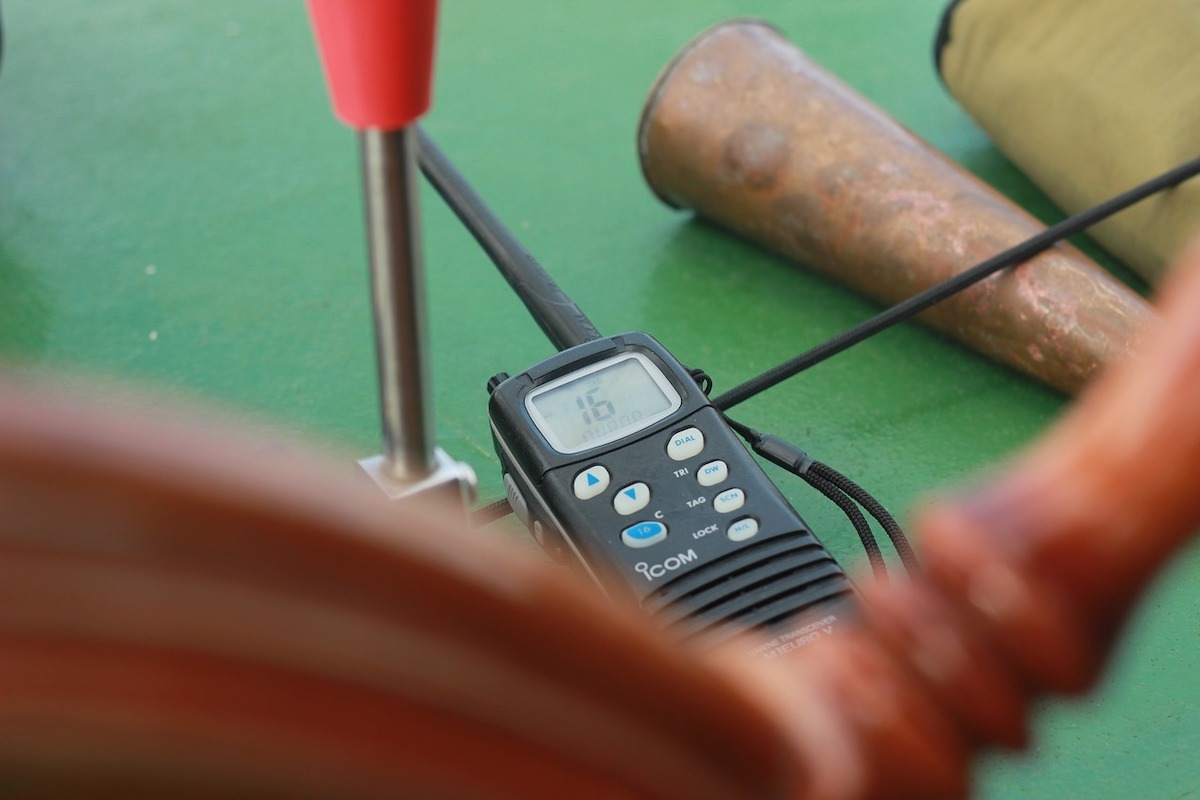
A VHF radio is a critical piece of safety equipment that should be on board every powerboat , and knowing how to use it could save the life of you and your passengers, so read the owner’s manual for your radio to become familiar with its functions. That same VHF marine radio can be used to communicate with other boats, with draw bridges and locks, and with marina operators.

Basics Steps for Using a VHF Radio
- Turn on the VHF unit and adjust the squelch by turning the knob until the static stops.
- Tune to channel 16, the channel monitored by the U.S. Coast Guard.
- Perform a radio check to ensure your unit is functioning properly—do not use channel 16 this.
- Use an "open channel" to performance the check (channels 68, 69, 71, 72 and 78A).
- Turn radio to one-watt power setting, and key the microphone.
- Call "radio check" three times, followed by your boat name and location.
- Wait for a reply confirming someone has heard your transmission.
- For general communications, always use channel 16.
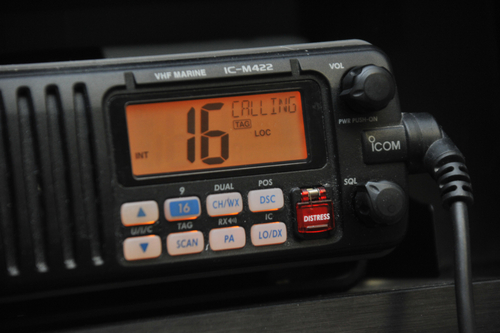
Start by turning on the VHF unit and adjusting the squelch. Turn the squelch knob until you hear static, and then turn the knob back just until the static stops. Tune the radio to channel 16, which is the channel the Coast Guard constantly monitors. Keep your unit set to channel 16 so you can hear emergency calls or transmissions from the Coast Guard.
You’ll want to confirm that your radio is functioning by performing a radio check. Do not use channel 16 for a radio check. Instead, use one of the “open channels” (68, 69, 71, 72 and 78A) which are designated for conversation. Turn the radio to its one-watt power setting, key the microphone and call “radio check” three times followed by your boat name and location; so for example “radio check radio check radio check this is Big Daddy in North Harbor Marina.” Then wait for a reply confirming that someone has heard your transmission. Sea Tow operates a network of automated radio-check stations in many parts of the country as a public service (check at Sea Tow to find the correct frequency in your area).
For general communication, start by hailing the other party on channel 16; for example to reach your buddy on Some Fun you’d call their boat name twice, followed by your boat name and “over” so it would so like this:
- “Some Fun Some Fun. Big Daddy. Over.”
- Then Some Fun should respond “Big Daddy this is Some Fun. Over.”
- You’ll reply with an open channel to switch to, for example “69.” Then both parties will switch to channel 69 to exchange information.
- After your initial transmission on channel 16, wait at least two minutes before hailing the other party again. If you still don’t get a reply wait 15 minutes and try again. The point is not to pollute channel 16 with unnecessary transmission.
- If the other party is close by, switch your radio to 1 watt (low power) so that your transmission does not travel so far. This lets distant boaters also use the channel.
The open VHF frequencies are intended for operational messaging, so it’s OK to share weather info, but not to talk sports. End each transmission with “over” and when you are done with the conversation say your boat name and out, “Big Daddy out,” which let’s everyone know you are done using that channel.
Using a VHF Radio in an Emergency
- Tune the radio the channel 16 and full power.
- If lives are in danger transmit “Mayday Mayday Mayday” and your vessel name.
- Wait for the Coast Guard to respond and be ready to reply with your location, ideally with latitude and longitude from GPS.
- If your situation is bad but not life-threatening, use the call “pan-pan.”
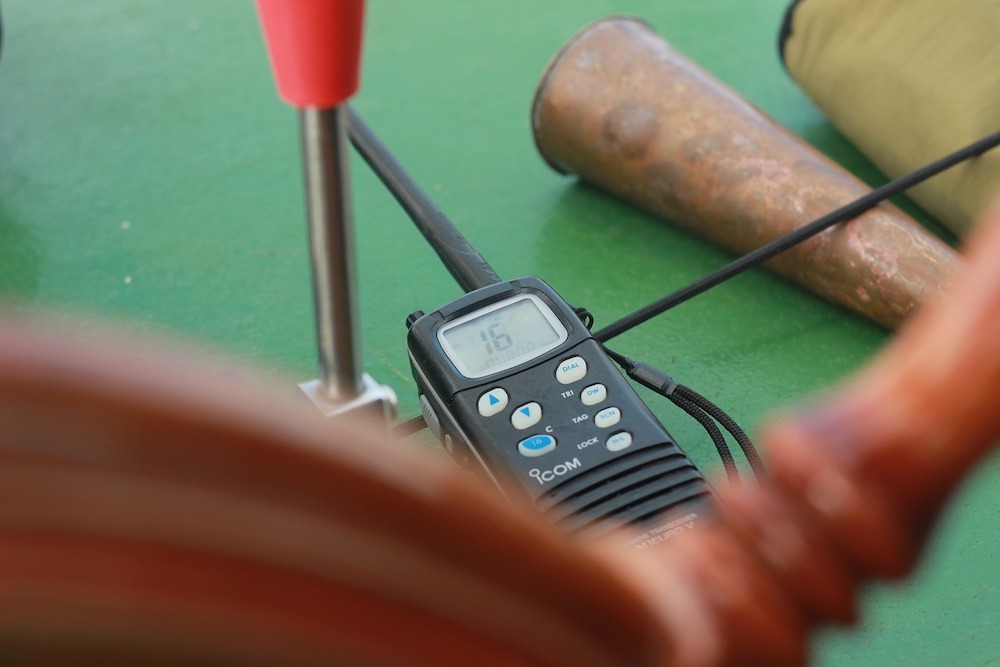
Types of VHF Marine Radios
A VHF marine radio may be hand-held or fixed-mount.
- A fixed-mount VHF unit is permanently installed on the boat and powered by the boat’s electrical system.
- The hand-held version is portable and is battery-powered, so it will still function if the boat’s battery is dead or the electrical system fails, and can be used if you are forced to abandon ship.
Many hand-held units are also waterproof and will float. For this reason a hand-held unit is a great back-up to a more-powerful fixed-mount VHF.
Digital Selective Calling
Digital Selective Calling (DSC) is a feature on all fixed-mount radios that with the push of one button sends a signal with your location to the Coast Guard. However, for DSC to work the radio must either have its own internal GPS receiver or be linked to another GPS on the boat, such as a chart plotter. Many boat owners are not aware that the radio needs to be linked to GPS, so make sure you handle this task right away.
Read Next: Boat Safety Checklist & Safety Equipment
Looking for more on marine communication and safety? Read...
- Boating Safety Guide
- Weather Safety Tips for Boaters
- Life Jackets, Vests & PFDs: How to Choose the Right Fit
- Pre-Departure Checklist
- Explore Boat Types

Join Our Newsletter!
Get community news, buying bargains, and how-to guides at your fingertips.

How to Select a Marine VHF Antenna: Expert Guide
Selecting a suitable marine VHF antenna is crucial for boat owners relying on VHF radio for communication and safety.
A well-chosen antenna can significantly improve radio transmission and reception, ensuring clear communication over longer distances.
Factors such as antenna height, gain (measured in decibels), and materials play essential roles in determining the performance of a marine VHF antenna.
Understanding the key features of these antennas is vital to making an informed decision, as is considering how the antenna will be installed on your boat.
Additionally, being aware of VHF radio transmission and reception principles helps choose the right marine electronics for optimal performance.
Key Takeaways
1️⃣ Selecting a suitable marine VHF antenna is crucial for effective VHF communication and safety on the water.
2️⃣ Antenna height, gain, and materials are important factors to consider when choosing the correct antenna for your boat.
3️⃣ Understanding VHF radio transmission principles and installation considerations aids in selecting the appropriate marine electronics.
🔑 Key Features of A Marine VHF Antenna
Choosing antenna material.
Marine VHF antennas are commonly made from fiberglass, brass and copper, or stainless steel.
Fiberglass antennas offer durability and long-lasting performance in harsh marine environments.
Brass and copper antennas, on the other hand, are known for their excellent radiator properties and efficient signal transmission.
Stainless steel antennas are valued for their strength and corrosion resistance.
To learn more about different types of marine VHF antennas , consider exploring various options available on the market.
Considerations for Gain and Height
A key factor when selecting a marine VHF antenna is the antenna gain, which is usually provided in a dB rating.
Gain refers to the ratio of output power to input power in decibels (dB). A higher dB rating represents a stronger signal transmission.
Antenna height also plays a crucial role in achieving better signal reception.
Generally, the taller the antenna, the greater the range, with heights varying from a few inches to over 20 feet.
Remember that taller antennas typically offer higher gains, so a balance between height and dB rating is crucial to choose an antenna that suits your needs.
Mounting Options
Mounting options for marine VHF antennas depend on various factors, including the boat’s configuration and available space.
Standard options include base mounts, which secure the antenna to the boat’s surface or structure, and rail mounts, which allow for attachment to railing systems.
Another possibility is a quick-release mount. So you can easily attach or detach the antenna from the boat.
🎓 Pro Tip: You should also consider where to mount the VHF antenna , as it will help maintain its effectiveness.
🪛 Considerations for Installation
Finding the ideal location.
The ideal location for installing your marine VHF antenna is crucial for optimal performance.
You should consider factors such as rigging tubes, low bridges, and the importance of antenna height, which will ensure that your VHF has the best possible range and signal clarity.
Higher locations generally offer a better range, but you must balance this with any potential interference from surrounding structures or obstacles.
Installation Techniques
The most common techniques include mast mounting, surface mounting, and rail mounting.
Mast mounting: This is typically used for sailboats and involves attaching the antenna to the masthead. This type should offer minimal windage and a wide radiation pattern, as required by a heeling sailboat.
Surface mounting: is a popular option on powerboats and involves attaching the antenna to a flat surface on the boat. They should provide a stable and durable platform for the antenna.
Rail mounting: provides a versatile option, allowing the antenna to be attached to a rail on the boat. This can be particularly useful for boats with limited space or specific mounting requirements.
When considering rail mounting, it’s important to select a mount that securely grips the rail while allowing the antenna to be easily adjusted for optimal performance.
Significance of Cable and Connectors
Just as important as the antenna itself, the quality of the cable and connectors used in the installation can significantly impact your VHF system’s performance.
High-quality components will help minimize signal loss, ensuring optimal performance over longer distances.
It’s also important to ensure all connections are properly sealed to prevent moisture ingress and corrosion, particularly in the harsh marine environment.
Follow these factors during the installation process, and you’ll be well on your way to enjoying clear and reliable communication with your marine VHF radio system.
📻 Understanding VHF Radio Transmission and Reception
Importance of line of sight.
VHF radio transmission relies heavily on line of sight for successful communication.
Since VHF radio waves travel mainly in straight lines, any obstructions, such as hills or buildings, can significantly affect the signal quality and range.
In marine environments, the curvature of the Earth and varying boat heights also play a role in determining the overall range of VHF radio communication .
A clear line of sight between the transmitter and receiver is essential for optimal reception.
Dealing with Signal Strength and Frequencies
Signal strength is a crucial factor in VHF radio communication because it impacts clear and reliable communication over longer distances.
Signal strength is typically measured in decibels (dB), and factors such as antenna gain, cable loss, and distance can impact the overall performance of the VHF system.
To maximize the signal strength, selecting the appropriate antenna with suitable gain and minimizing cable loss by using high-quality, low-loss coaxial cables is essential.
Additionally, using the correct frequencies assigned for marine VHF communication helps avoid signal interference and maintain clear communication.
Understanding Transmission Patterns
VHF radio antennas emit a transmission pattern that influences the range and efficiency of communication.
The antenna’s gain, measured in decibels (dB), determines the shape of this transmission pattern.
A higher gain antenna focuses the radio waves into a flatter, more horizontal pattern, maximizing the range and ensuring a stronger signal at the receiver’s end.
But, in a marine environment where boats pitch, and yaw, a high-gain antenna may result in a fluctuating signal due to the constantly changing angle between the transmitter and receiver.
So, when selecting your antenna, consider factors such as:
🔸 The boat’s size 🔸 Intended communication range 🔸 The antenna’s gain
Prioritizing a clear line of sight, optimizing signal strength, and understanding the antenna’s transmission pattern can significantly improve your VHF radio communication experience.
🎯 Choosing the Right Marine Electronics
When selecting marine electronics for your boat, it’s important to consider the integration of your marine VHF radio and GPS.
This next section looks at the benefits of including GPS in your VHF radio.
Inclusion of GPS in VHF Radios
One of the major advancements in marine VHF radio technology has been the incorporation of GPS functionality within radio units.
A marine VHF with DSC (Digital Selective Calling) and a built-in GPS receiver enables users to send automated distress calls with crucial location information in emergencies.
An integrated GPS in your VHF unit adds an extra layer of safety and convenience, making it easier for the Coast Guard and other vessels to respond promptly in emergencies.
Selecting the Right Marine VHF Radio
When deciding on a marine VHF radio for your boat, consider the following factors:
➕ Additional Factors to Consider
When selecting a marine VHF antenna, there are several factors to consider beyond the basic specifications.
Powerboats and sailboats have different requirements due to the distinction in their structure and purpose.
For instance, antennas mounted on hardtops are common in powerboats, whereas sailboats usually require mast mounting.
The boat’s intended use, such as a sport-fishing yacht or a family runabout, will influence the communication needs and antenna choice.
Price-point categories play a role in the decision-making process. A higher quality antenna most often corresponds to a higher price, but it can provide a better signal-to-strength ratio and improved durability.
Considering the importance of reliable communication, investing in a higher-end antenna may be worthwhile.
Boat motion, including roll and pitch, is another factor that influences VHF antenna selection. A good connection depends on maintaining a narrower pattern while the boat moves.
As such, fiberglass VHF antennas can offer better performance and resistance to motion in multiple boat styles.
VHF antennas can be black or white to match the boat’s aesthetic. But, the choice of color is a personal preference and does not necessarily impact antenna performance.
Black antennas have gained popularity among boaters due to their sleek appearance and potential to withstand harsh environments.
When it comes to mounting options, ratchet mounts, electric mounts, and taco marine ratchet-style antenna mounts are popular choices.
The ideal mount will secure the antenna and maintain the correct angle while accommodating the boat’s motion.
So, choose a mount that works well with the selected antenna’s height and transmitter.
Understanding various installation techniques and antenna performance is necessary for making the right choice. You should be familiar with how to test a VHF marine radio antenna to ensure optimal functionality once installed.
Now, you can confidently select the best marine VHF antenna for your specific boat type and communication needs, ensuring clear and efficient communication while on the water.
Written by:
I’m the founder and chief editor here at Sailing Savvy. I spent a decade working as a professional mariner and currently, I mix those experiences with digital publishing. Welcome, and I hope that we can be the hub you need for safe passage.
You May Also Like

- 2024 BOAT BUYERS GUIDE
- SHALLOW WATER FISHING
- Email Newsletters
- Boating Tips
- Boating Safety
- Electronics
- Best Marine Electronics & Technology
- Baits & Lures
- Fishing Tackle
- Fishing Travel
- Conservation
- Fishing Knots
- Women in Fishing

Choosing and Using the Best Marine VHF Antenna
- By Chris Woodward
- Updated: January 9, 2020
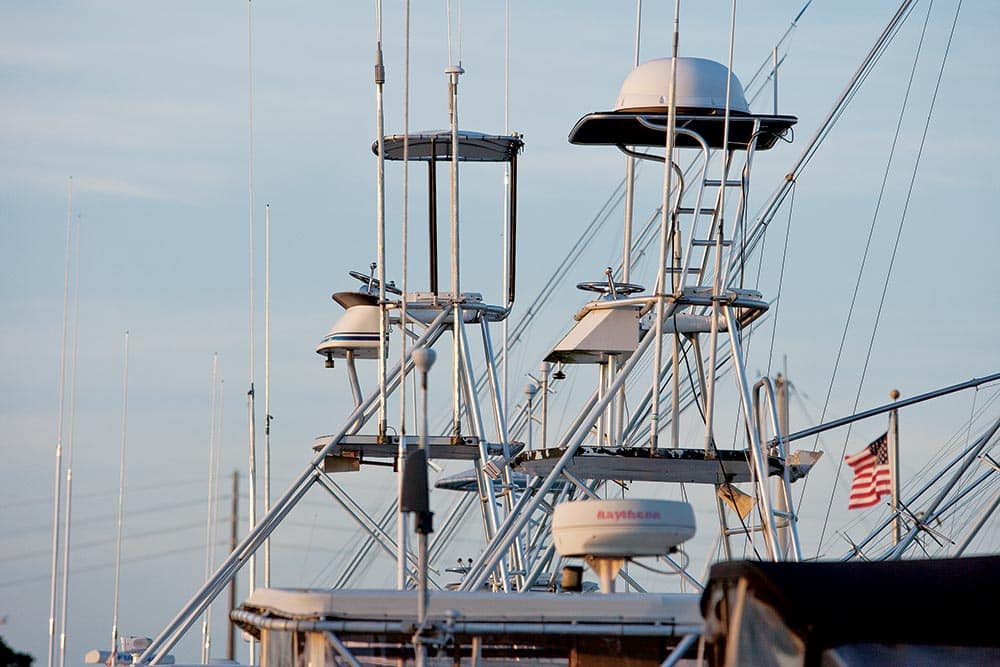
When shopping marine electronics , it’s easy to fall for a cool new multifunction display or even a VHF/AIS combo. But when it comes to shopping for parts such as transducers and antennas, where’s the love?
For anglers, the right or best VHF antenna could mean the difference between finding a great bite or enduring the skunk. On a more serious note, it could rescue you from a stranding or accident.
“If all things are equal — including antenna height and radio model — you could go from a range of 10 miles to 25-plus miles just based on the materials in the antenna,” says Chris Catoe, marine sales manager for the Shakespeare Antenna Group.
For that reason, most experts advise buying the best antenna you can afford. Prices range from about $30 to more than $300 for most recreational fishing vessels.
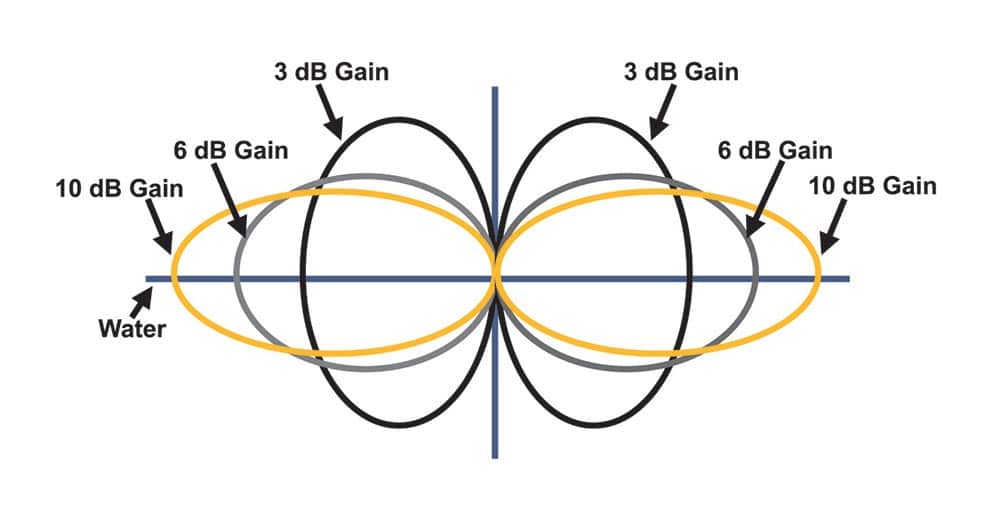
What is a VHF Marine Antenna?
“We have sensitive receivers,” says David McLain, national sales manager for ICOM, makers of VHF marine radios. “But if you match one with just a $30 antenna, you’re not going to get the range an ICOM can get you.”
At Shakespeare, VHF marine antennas are grouped into three categories that correlate to good, better and best products. Those categories are Classic, Galaxy and Phase III models. Key differences boil down to what’s inside, whether coaxial cable, a combination of coax, brass and copper, or all brass and copper; brass and copper create the greatest efficiency.
However, before dissecting antennas, anglers should understand just what an antenna is, says John Jones, vice president of engineering for Digital Antenna. “It’s a machine,” he says. “People think it’s a piece of wire. Anything we build is a physically resonant circuit for the frequencies we intend to use. An antenna converts electrical signals into photons — it’s a photon generator.”
Catoe says consumers often think, as well, that a VHF antenna transmits only from its tip. “It radiates from the base up,” he confirms.
Because of the energy surrounding the antenna and because the signals travel by line of sight, the antenna’s placement aboard a vessel is key. Even the best antenna won’t perform when placed too close to another antenna using similar frequencies (AIS or another VHF), or when mounted too low or too near metal objects.
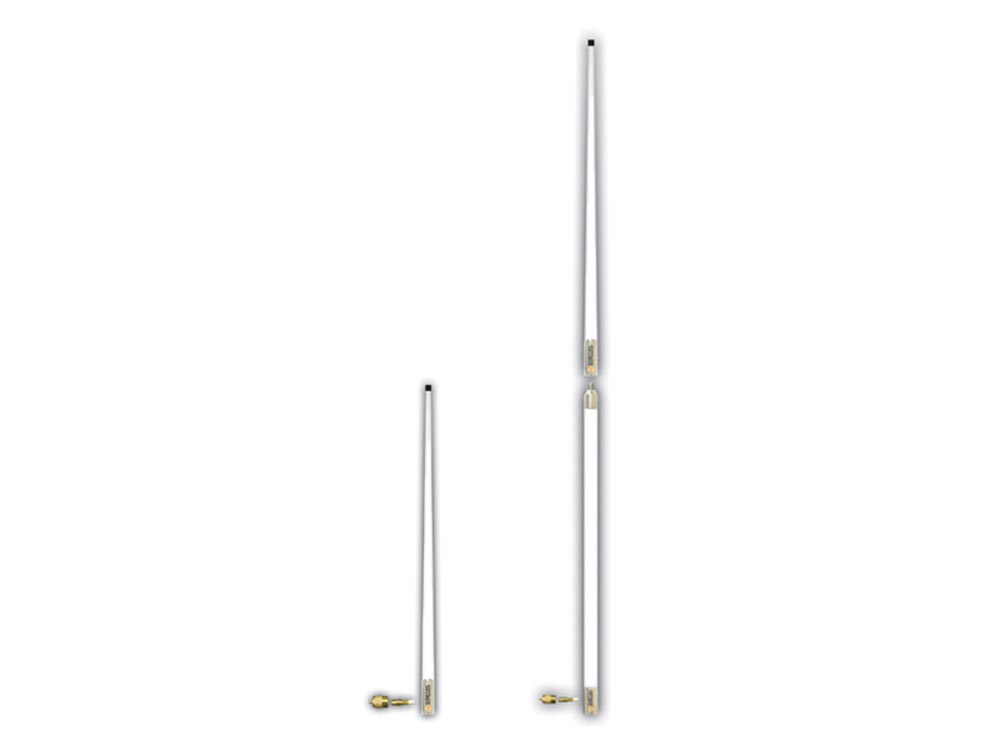
Marine VHF Antenna Height and Strength
Other considerations for choosing the right VHF antenna include antenna height and gain. Catoe says the vast majority of powerboats in the 24- to 32-foot range do well using 8-foot antennas with 6-decibel (dB) gain. A 3- to 4-foot antenna that’s 3 dB is generally recommended for boats under 24 feet. Larger vessels can opt for 12- to 18-foot, 7 to 8 dB antennas.
“As a general rule, antenna height should be less than half the length of the boat,” Catoe says.
Higher-dB antennas generate greater effective radiated power, and that can translate into greater range. However, the lower-dB antennas, such as a 3 dB stick, are recommended for vessels like sailboats carrying antennas atop a tall mast that sways in high seas. The 3 dB antenna creates a larger signal pattern, but that pattern doesn’t travel as far, so it doesn’t leave the horizon as dramatically when the boat pitches.
Anglers who own VHF radios that are equipped with Automatic Identification System can use one VHF antenna for both functions as long as the AIS is receive-only. If your AIS unit also transmits, two antennas are necessary.
“We always recommend dedicated antennas for each,” Catoe says. “Any time you split something, you usually sacrifice something. Most people like to have both systems operating optimally.”
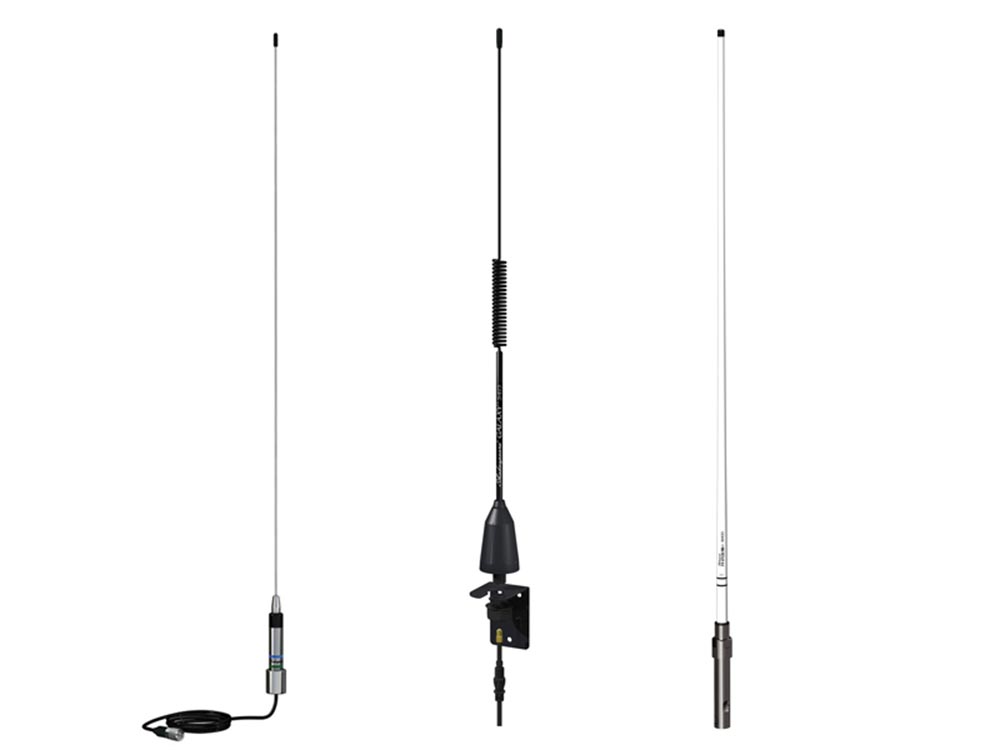
Durable Marine VHF Antennas
In most cases, an angler breaks a VHF antenna before it dies of natural causes. “Antenna life span is hard to establish. Some last two years; some last 30,” Catoe says. “It depends on how you’re taking care of it, and which grade of antenna you purchased.”
Better antennas have UV blockers in the paint or they might be heavier-duty fiberglass or come with stainless steel rather than plastic mounts. Shakespeare recommends boaters wash their VHF antenna with soap and water whenever they wash the boat. Don’t use abrasive detergents that can strip the finish off the fiberglass. Some boaters apply wax, Catoe says, which will not interfere with the antenna function.
Tom Burden — senior product content editor for West Marine, which sells a variety of antennas, cables and connections — says that corrosion can become a major problem, particularly at connection points.
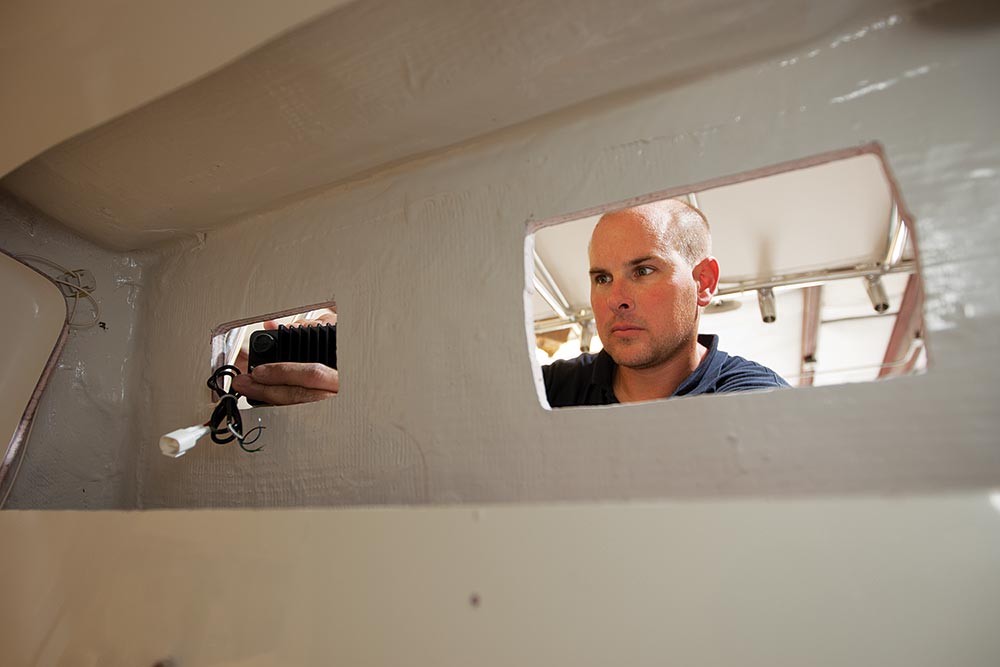
If you experience radio problems you think come from the antenna, you can always test the signal strength by calling a friend on another boat, Burden advises. Have that friend start fairly close and move away until the signal fades.
Shakespeare also sells an ART-3 antenna meter. That unit tests the voltage standing-wave ratio, the output power, battery voltage and the radio’s receiver. If the antenna is faulty, it can be replaced. Most antennas come with three- to five-year warranties.
When you buy a new antenna or replace an old one, chances are you won’t run into the tech creep that plagues other electronics types. Physics more or less defines the technology of an antenna, so it hasn’t changed much over time. Materials have changed a little, but “the biggest trend I’m seeing,” says Catoe, “is the combination of things: antennas or radios that have multifunctions (AIS and VHF together, or cellular and Wi-Fi). It’s all about centralizing all product in a smaller footprint.”
- More: communication , Electronics , Marine Electronics , VHF Radio
- More Electronics
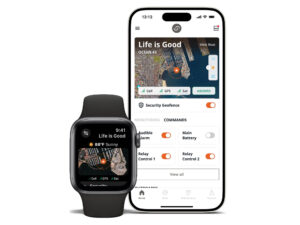
New Gear: The Siren Connected Boat App
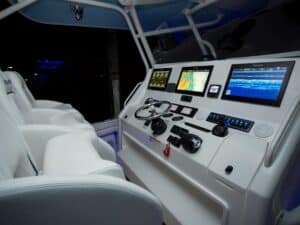
How Big a Fish Finder Do I Really Need?
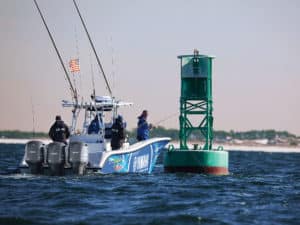
2023 Boat Buyers Guide: Engine-Integrated Autopilot
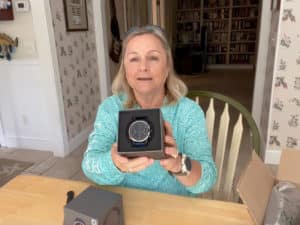
Video: Unboxing the Garmin quatix 7 Smartwatch
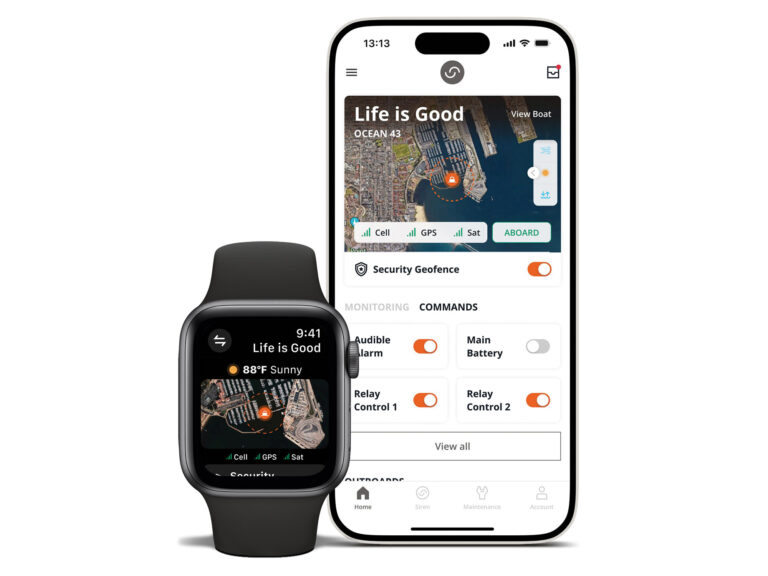
QUICK GUIDE: Surf Fishing Etiquette

Fishing With Crabs as Bait
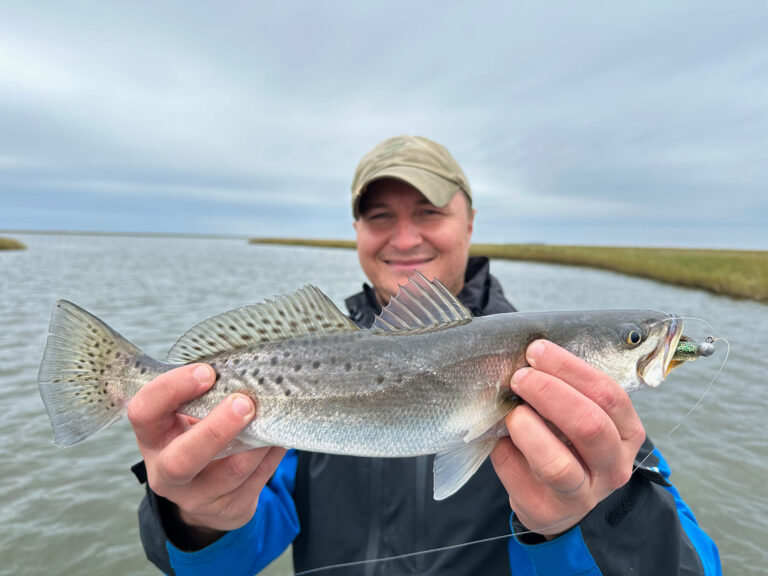
West Winds Are the Best Winds
- Privacy Policy
- Cruising World
- Sailing World
- Salt Water Sportsman
- Sport Fishing
- Wakeboarding
Many products featured on this site were editorially chosen. Sport Fishing may receive financial compensation for products purchased through this site.
Copyright © 2024 Sport Fishing Firecrown . All rights reserved. Reproduction in whole or in part without permission is prohibited.

Advice on buying a VHF radio
LISTEN CAREFULLY I WILL SAY THIS ONLY ONCE…Well maybe three times
Looking for a new or replacement VHF this summer, then look no further. We have them all listed and offer some advice on what you should look for when buying either a fixed or handheld VHF.
Thanks to Tim Burdon -West Marine Advisor
The first decision is fixed or handheld. Both do the same job but some do it better than others. Secondly, just how much do you want to spend? With so many makes and models to choose from it is easy to base the decision on dollar values rather than performance values. You also need to look at what functions and features the VHF unit you are considering has. If it’s a handheld, does it float? If it’s fixed does it have secondary station options? Is it AIS and GPS compatible. Also a fixed VHF radio is only as good as the aerial attached to it. In the case of handhelds, you have little choice, although most can now be linked up to fixed aerials as well to enhance their power.
VHF (Very High Frequency) radios provide two-way communication and have a range of 5 to 30 nautical miles. They are, arguably, the most important safety item onboard your boat, and are far more reliable than a cell phone, with its limited on-water range and dropped calls. In coastal or inland waters, a VHF radio is generally the fastest link to rescuing agencies like the Coast Guard, a towing service or the harbourmaster. Other uses include conversing with other boaties, listening to weather information and alerts.
Handhelds are limited to a transmit power of six watts, compared to 25 watts for fixed-mount radios. Remember, VHF range is more dependent on antenna height and antenna gain than on transmit power, so you can add significantly to your range by connecting an external antenna or by transmitting from the highest location available. For normal handheld use (at five-watt transmit power), figure on a 3-8 mile range from a small boat.
The batteries in handhelds vary in capacity from about 500mAh to 2000mAh, and the current draw on high-power transmit can be in the two-amp range. This quickly depletes a battery if there is lots of conversation.
Unlike Single Sideband (SSB) or shortwave radios, VHF radios transmit and receive line of sight signals. Mountains, land masses, the curvature of the earth or anything else that blocks vision in a straight line will also block VHF signals (although they do have the ability to “bend” around objects in a limited way).
VHF radios only listen to the strongest signal they receive. If several people are transmitting simultaneously on the same frequency, you will only hear the one with the strongest signal, which will “step on” the other weaker transmissions.
Maximum Power
Fixed-mount radios are legally limited to 25 watts of transmit power. All have the option of transmitting at one watt of power so that short-range conversations are less likely to interfere with large numbers of boaters. It’s a good idea to try to reach your party on one watt before switching to 25 watts.
All VHF radios have the same 55 channels with International menus and you can listen to any of them, but most are reserved for government, commercial shipping or Coast Guard use. You can transmit on about 12-15 channels.
Your antenna installation is the most important variable affecting the operating range of your VHF. Mount your antenna as high as possible and use an antenna with 6 or 9dB gain. Use large-diameter, low-loss coax cable with properly installed connectors and run it as directly as possible to the radio.
Battery Power
Fixed VHF radios receive power from your boat’s battery bank, so your operating time is essentially unlimited, because they draw about half an amp while receiving, and about five amps while transmitting at maximum 25 watt power. The only problem is that, if your battery system goes dead, so does your VHF radio. A handheld VHF is thus an important backup in an emergency.
A hand held VHF will operate for a range of between 7 ½ and 20 hours. Battery life depends on the radio’s physical size, which determines just how big of a battery it will hold, whether it transmits at 5 or 6 watts on the high power setting, and if the battery pack also powers a GPS receiver. In general, floating VHFs have shorter battery life than heavier, non-buoyant models. What matters most is the answer to this question; will the radio operate all weekend without a recharge?
Digital Selective Calling (DSC)
All fixed VHF radios include Digital Selective Calling capability, which is part of the international protocol of safety procedures in the Global Maritime Distress Safety System (GMDSS). DSC provides handy non-emergency functions, allowing you to communicate individually with another boat or group of boats. You can privately send and receive positions (referred to as Position Request or Position Polling) with your buddy boats to rendezvous at that secret location where the fish are biting, for example.
What’s more important are DSC’s emergency capabilities—functioning like a sort of coastal EPIRB. In an emergency, one push of a button makes your radio send an automated digital MAYDAY message on VHF Channel 70, which can be received by all other vessels within radio range and the Coast Guard. It transmits your vessel ID number, called an MMSI Number, as well as your position and the nature of your distress call (undesignated, fire, flooding, collision, grounding, capsize, sinking, adrift, abandoning, piracy, MOB). The radio then automatically switches to Channel 16 for voice communication after this information has been sent, allowing you to communicate by voice with would-be rescuers.
All DSC radios sold in March 2011 or later (Class D radios) have a separate “watch standing” receiver that constantly monitors DSC Hailing Channel 70. The radio’s other receiving channel is free to listen to any other channel. Radios built to these standards also include additional features including added memory to store other vessels’ MMSI numbers. Older radios may only have one receiver (so you could possibly miss an emergency call while listening on a different channel) or may not have DSC at all.
VHF Radio Size and shape
Typical fixed compact units measure about 6″ wide x 3″ tall x 5-6″ deep and are designed to fit in the or around the helm. Standard Horizon makes two of the smallest. The cases on the GX1700 and GX1600 are only about 3 1/2″ deep, so they’re a good choice for a small boat.
Black box designs like ICOM’s M400BB and Garmin’s VHF 300 are another space-saving alternative, with a modular design that positions the guts of the radio in a remote, sheltered location, with only a small handset and speaker panel taking up your valuable space on a crowded instrument panel.
A key advantage of a handheld is they are small and can be place just about anywhere. The portability means you can communicate while you are away from the primary helm and you can link to the mother ship from your dinghy and let you summon assistance when the outboard fails to start.
Another advantage of being portable and ‘of no fixed abode’ is if your electrical system fails and your fixed VHF is powerless, then the handheld with its own separate antenna and battery pack will still be fully functional.
If your handheld radio goes overboard, a floating handheld gives you another chance to avoid a big disappointment and a trip to the store for a new radio. Although floating radios are a relatively recent idea, most of the handheld radios today now float. Note that there seems to be a trade-off between lightweight, floating radios, and radios with big batteries and the longest battery life, so you have to choose which feature, long runtime or a floating radio, you prefer.
Some handhelds also include a “Float ’n Flash” feature. These radios float face-up, and the screen, buttons and several LED lights on the base all flash on and off.
GPS or AIS combos
Several radios include a built-in GPS receiver, which you can use for navigation, providing your Lat/Lon position and allowing you to navigate to stored waypoints. These VHF/GPS combos include Digital Selective Calling (DSC), which functions as a sort of VHF-frequency emergency beacon. Just push and hold down the red DISTRESS button, and it sends an automated digital distress message to the Coast Guard and all other DSC radio-equipped vessels. Rescuers instantly know who you are, where you are (using GPS coordinates), the name of your boat and the phone numbers of your emergency contacts.
DSC also provides non-emergency capabilities, allowing you to communicate individually with another boat or group of boats using MMSI numbers. You can send and receive each other’s positions as well, if your radio and the other vessel’s radio are interfaced to GPS.
Scanning Functions
Virtually all radios now have several scanning options, so this has ceased to be a reason to buy one radio over another. There are variations on this theme, however, and you should become familiar with the terminology.
Dual Watch or TriWatch allows you to monitor a working channel, like VHF Channel 72, and then pop back to VHF Channel 16 to check for traffic every two seconds or so. This is related to the requirement that mariners maintain a watch on Channel 16 so they can go to the aid of someone broadcasting a Mayday, as well as to listen for their vessel being hailed by another boater. TriWatch adds VHF Channel 9 to the scan list, which can be a hassle in areas where VHF Channel 9 is used for fishing chatter. In any case, virtually all radios have Dual and/or TriWatch.
Tag Scan allows you to select any number or combination of channels to monitor. Most radios also offer this feature.
Measuring VHF receiver performance
Lots of boats are on the water and in some areas boaters have difficulty finding a clear frequency, with interference from signals on adjacent channels making it hard to hear messages. Some radios offer better performance in filtering out RF signals, referred to as intermodal rejection, or how well the radio hears only what it is supposed to hear. Generally, modern VHF radios have increasingly sensitive receivers.
Another problem happens when boaties near you can pick up distant signals, but you can’t. Assuming that your antenna, cable and coax connectors are in good working order (and with corrosion in a salt-water environment, this is a big assumption), you may have a problem with the sensitivity of your receiver, how well the radio hears or how strong the signal must be to be heard.
Sensitivity is measured in microvolts (µV@ 12dB SINAD), and smaller numbers are superior. Remember that the type and quality of your antenna and its height above the water are the most important factors in receiver performance.
Antenna adapters for your VHF are available to connect your handheld to the ship’s antenna. This extends the range of the handheld dramatically, and is an important safety feature should your fixed radio fail. The type of adapter varies with the brand of radio: most use a BNC connector, while others use a special connector. All provide male PL-259 threads for connection to the antenna coax cable.
HOW TO USE A VHF – Courtesy of Maritime NZ
With a VHF radio, calls can be received by Maritime NZ, the Coastguard and by vessels which may be in position to give immediate assistance. A VHF marine radio also helps ensure that storm warnings and other urgent marine information broadcasts are received.
There is good VHF radio coverage in the coastal waters of New Zealand.
Off coastal water, a VHF radio should be your first communication in an emergency. With a few exceptions, even a portable VHF radio can give you up to 50kms of coverage. Even better, on channel 16, a trained operator will take your emergency call within a minute and begin co-ordinating your rescue. Channel 16 is known as the distress channel. Be aware though that a VHF has a range limit and is subject to shadows in difficult terrains like Fiordland.
Four simple steps
Follow these four simple steps to make sure that your VHF radio is ready in an emergency.
Get the right VHF radio for you
The best advice is for skippers to always have a handheld, waterproof VHF radio on their person, preferably attached to their life jacket. A fixed VHF radio has a greater range and is better for regular communication, but you will not be able to access it if it’s water damaged in a capsize. Carry both a handheld and a fitted VHF radio on your vessel.
Take a course
Knowing how to use a marine VHF radio correctly and with confidence is vital in the event of an emergency. To operate a maritime VHF radio you are required to hold a VHF radio opertor Certificate, unless you are transmitting in an emergency or in distress. Courses are only a few hours long and give you the confidence of knowing how to use a VHF radio in an emergency.
Online courses only cost $85 and are available at CoastGuard Boating Education.
Get a call sign
A call sign for your boat is the best way of making sure each radio transmission is individually identifiable. It is registered on a national search and rescue database. This means that search and rescue authorities can access information about your vessel to help locate you faster in an emergency. Call signs only cost $45 and are available at Coastguard Boating Education or the Ministry of Businesss Innovation and Employment.
Know where you are
VHF radios have excellent coverage in most coastal regions. Many inland waterways are less reliable. Before going boating ask a local boatie or Coastguard, they will know where there is no or little VHF coverage. Also check the VHF coverage map.
If the area you’re boating in doesn’t have good coverage, make sure you have an EPIRB (a distress beacon for boats), or a waterproof PLB (personal locator beacon) and a cellphone. In fact, it’s always a good idea to have a beacon anyway.
Using your VHF
Other than being in standby, Channel 16 is for hailing and distress purposes only, which in some areas, seems to be a long-forgotten rule! So make your initial hailing call clear and short!
The correct hailing procedure is to state one to three times in succession the name of the boat or station you are calling, followed once or twice by the name of your boat, then “Over.” Any additional words are unnecessary and incorrect procedure. Once your party replies, you instruct him/her to switch to a working channel and clear out of channel 16.
Horizon V81
Southern xp816, related articles, connecting your vessel with next generation technology, kiwi trailer boats by the decades | 1940s..., seakeeper ride, electronics hub – the kiwi way, communication at sea, seven top radars, night navigation, understanding woef cert, pv solar explained.

D&B Publishing is proud to have delivered the Pacific regions best power boat read for over 25 years. Our PowerBoat team brings you the news, views and reviews from around the world. A team second to none when it comes to power boating.
- Boat Reviews
- Boat Safety
- Destinations
- Buyer Guide
- General Interest
- Company Profile
- [email protected]
- +64 9 428 2328
- Warehouse 13, Hull Marina, Hull, HU1 2DQ
- 01482 235 560

Powerboat Training Courses & Marine Services
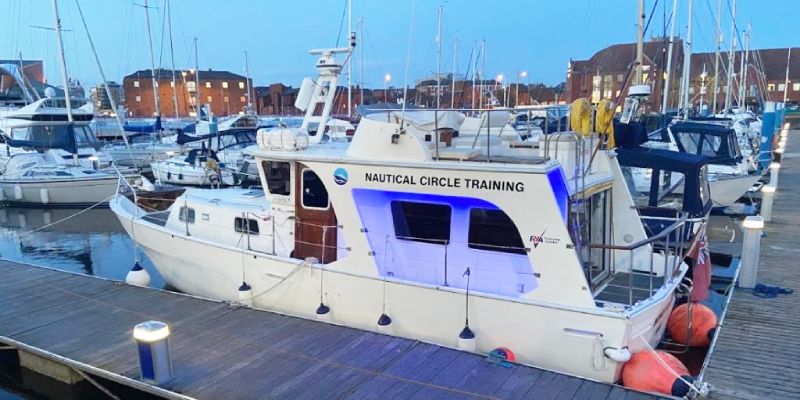
All RYA Training Courses
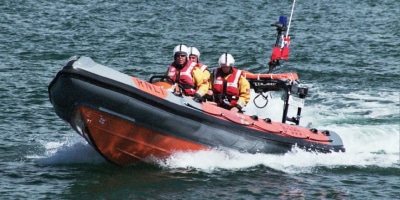
Powerboat Training Level 1+2
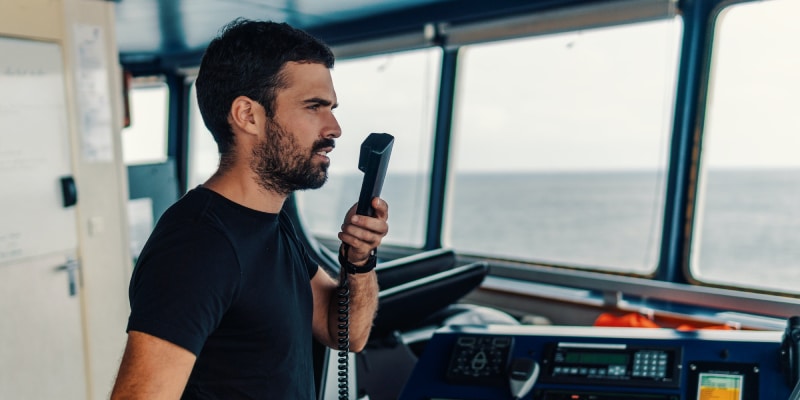
Day Skipper
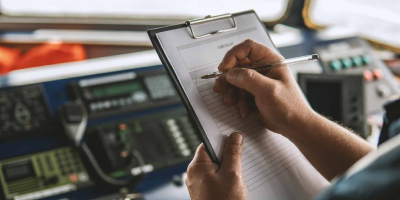
RYA Theory Courses
Spaces are filling up quickly, reserve now to not miss out!
Customer Reviews

Located at Waterside Marina in Kingston upon Hull, Nautical Circle is a truly national training centre delivering high quality, low student ratio training courses.
We have students travelling from all over the world to train with our approved RYA, HSE & MCA instructors. Our aim is to provide world class marine training, both theory and practical, to our recreational and commercial clients. Clients report our courses aren’t just informative, they’re fun too!
We offer training from Powerboat Level 1 to Yachtmaster, including all the theory elements you will need. We look forward to working with you
Qualified Instructors
We strive to offer the best possible tuition using only experienced, RYA qualified instructors.
3:1 Instructor Ratio
With your progression as our priority, and to comply with the RYA, we impose a maximum of 3 students for every course held on board one of our boats.
Official RYA School
We are a part of the RYA, meaning we are full accredited by them so you know you are getting the best service.
Online Training
As well as practical powerboat courses, we also offer a full range of online and shorebased training courses.
Modern Training Boats
All of our training boats have undergone stringent safety checks and have the most modern equipment on board.
Competitive Pricing
We believe in quality over quantity and pride ourselves on being able to offer a competitive pricing structure.
Have a question? Need help choosing the right course?

- Powerboat Training Level 1
- Powerboat Training Level 2
- Day Skipper Practical
- VHF Training
- Consultancy
- Privacy Policy
- Cookie Policy
- 2024 BOAT BUYERS GUIDE
- Email Newsletters
- Boat of the Year
- 2024 Freshwater Boat and Gear Buyers Guide
- 2024 Boat Buyers Guide
- 2024 Water Sports Boat Buyers Guide
- 2023 Pontoon Boat Buyers Guide
- Cruising Boats
- Pontoon Boats
- Fishing Boats
- Personal Watercraft
- Water Sports
- Boat Walkthroughs
- What To Look For
- Best Marine Electronics & Technology
- Watersports Favorites Spring 2022
- Boating Lab
- Boating Safety

BoatingLAB Tests: VHF Antennas
- By Randy Vance
- Updated: January 4, 2013
Longer broadcast and reception range is definitely better than shorter range, and longer antennas definitely give better reach.
That was BoatingLAB’s conclusion after lining up five popular antennas and calling to a mobile station at one- and five-mile ranges. Eight-footers, installed seven feet above sea level, all reached our mobile station five miles away, but shorter units lost their reach quickly after one mile. That’s only logical since a VHF signal travels via line of sight and antennas are made to polarize their signals on a horizontal plane.
But we wanted to know if you could hear a distinction between the signal and sound quality of a higher-priced antenna and that of a lower-priced antenna. The answer was an inconclusive “not really.”
Aside from signal reach, we found important differences in components that justify the added expense.
We tested two high-end VHF antennas ideally suited to a powerboat from 20 to 40 feet long. We also took a look at one value antenna and two short antennas suited to small boats or sailing vessels.
Pricing for our test antennas came from online retailers whose price points often reflected bargain prices on premium products. The slider bars on price/value are not influenced by those prices but by our assessment of quality components and manufacturers’ product positioning.
Here’s our test.
VHF Explained Gain Average Gain is the degree of polarity, or horizontal focus, of the signal. The more gain, the thinner the horizontal beam. A 6 dB gain is quadruple a 3 dB gain. A 9 dB gain is eight times the 3 dB gain and should be reserved for land-based stations. On a rocking boat, the signal would be aimed too high and too low to be received.
SWR Standing wave ratio is the amount of resistance to the signal an antenna exhibits. An SWR of 1:1 is ideal but usually unattainable. Your installation should reflect an SWR meter reading equal to the radio’s specifications.
Max Input Recreational VHF radios are limited to 25 watts of output, but land stations can be permitted for higher transmission power.
Termination RG8/X is the higher grade of coax used on VHF antennas in our tests. The higher grade better resists signal interference.
Length Since the VHF signal is line of sight, the taller antennas reach farther over the curve of the earth.
Radio Horizon Range for one antenna with a 15-foot height.
Tested Range This is the range at which the signal in our tests began to deteriorate.
Coax Supplied Each connection in the cable adds resistance to transmission. A longer cable means fewer connections and better transmitting and receiving dynamics.
Ferrule Stainless steel is better than chromed brass, which will pit. Plastic ferrules should be used where short-term life expectancy is acceptable. Polished stainless steel won’t pit or corrode as readily as chromed brass.
This is the fiberglass shaft that supports the antenna elements and protects them from weather. The better ones are finished with a durable polyurethane coating that protects the resins from the sun and prevents fiberglass shards from splintering on hands and deck.
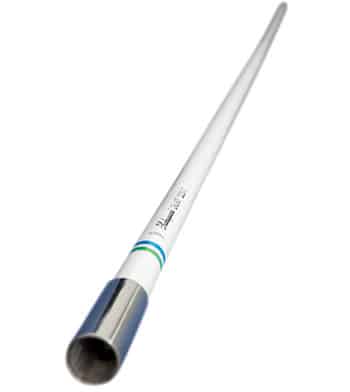
Shakespeare Galaxy 5225-XT Twenty feed of higher-quality RG8/X coax is a plus on larger boats. It also has a high-quality gloss finish to protect the radome from the elements. This was the only antenna with a stainless-steel ferrule, which will be much more resistant to corrosion, pitting and UV degradation.
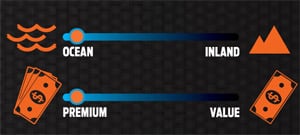
Specs Gain Average: 6 dB SWR: 1.5:1 at 156.8 MHz Max Input: 100 watts Antenna Length: 8 feet Radio Horizon: 5.3 miles Tested Range: 5 miles Termination: RG8/X Coax Supplied: 20 feet Ferrule: Stainless steel Radome: Solid fiberglass laminate has a 22 mm diameter at the base and 11 mm at the tip. The composite core is heavily coated for protection and good looks. Warranty: 5 years $134 plus shipping; amazon.com
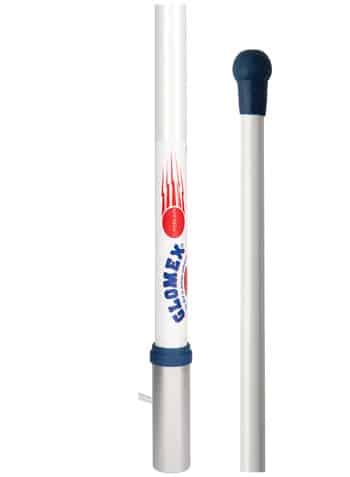
Glomex RA1225 A high-gloss finish protects the thicker radome fiberglass, but the coax supplied was RG-58 and only 15 feet were provided, possibly requiring a costly power-robbing splice. The chromed brass ferrule is adequate for the challenge of the elements, but not as ready for it as the Galaxy 5225’s stainless-steel ferrule.
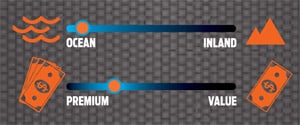
Specs Gain Average: 6 dB SWR: 1.3 at 156.8 MHz Max Input: 100 watts Antenna Length: 8 feet Radio Horizon: 5.3 miles Tested Range: 5 miles Termination: RG-58 Coax Supplied: 14.7 feet Ferrule: Chromed brass Radome: The two-layer laminate has a base of 24 mm and tapers to a 9.5 mm tip. It has a glossy coating for protection of the composite core. Warranty: Lifetime $78.99; amazon.com
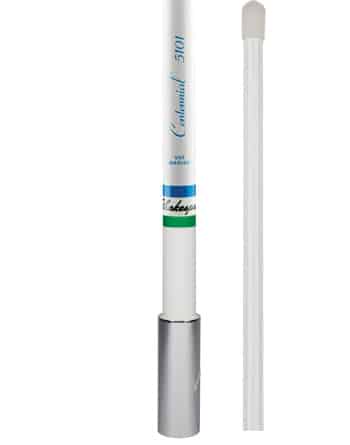
Shakespeare Centennial 5101 The only value-point antenna we tested is not the cheapest, but a midrange model. It worked well in our tests and was audibly, at least, as effective as the premium 8-footers. It sports a shorter length of less-expensive-grade coax, is not as glossy as the others, and bears a shorter warranty period.
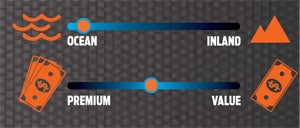
Specs Gain Average: 6 dB SWR: 1.5:1 at 156.8 MHz Max Input: 50 watts Antenna Length: 8 feet Radio Horizon: 5.3 miles Tested Range: 5 miles Termination: RG-58 Coax Supplied: 15 feet Ferrule: Chromed brass Radome: This antenna has a thinner radome of 20 mm at the base and 6 mm at the tip. Warranty: 2 years $60 plus shipping; amazon.com
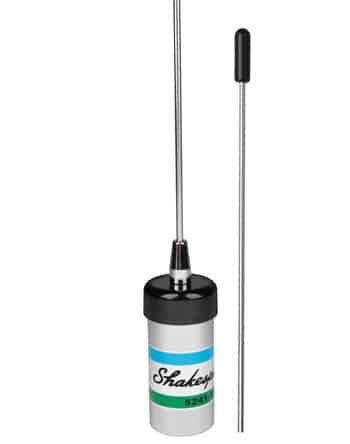
Shakespeare 5241-R The lower-gain antenna is best used in a smaller boat apt to rock excessively or at the top of a sailboat mast. Lower gain means a wider-focused beam that is less impacted by rocking.
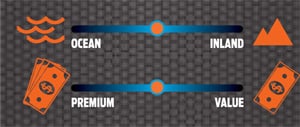
Specs Gain Average: 3 dB SWR: 1.5:1 at 156.8 MHz Max Input: 50 watts Antenna Length: 3 feet Radio Horizon: 4.5 miles Tested Range: 2 miles Termination: RG-58 Coax Supplied: 15 feet Ferrule: Chromed brass Radome: Stainless-steel whip Warranty: 2 years $60 plus shipping; amazon.com
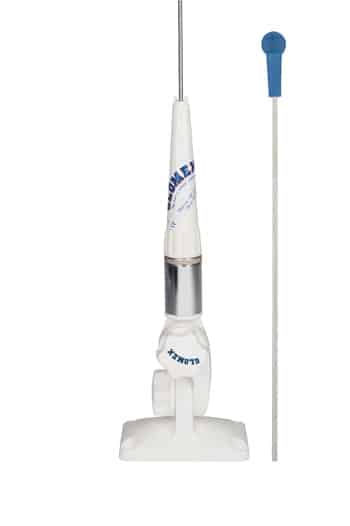
Glomex RA106SLSPB6135 Slightly longer than the other “short” antennas tested, this one came with a mount, the height of which we subtracted from the specifications below. It’s still the longer of the shorties. It came with 19 feet of coax, several feet more than the 14.7 feet listed in the specification sheets.
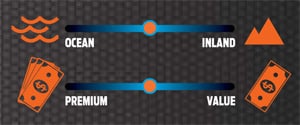
Specs Gain Average: 3 dB SWR: 1.3 at 156.8 MHz Max Input: 100 watts Antenna Length: 3 feet 7 inches Radio Horizon: 4.5 miles Tested Range: 2 miles Termination: RG-58 Coax Supplied: 19 feet Ferrule: Chromed brass Radome: Stainless-steel whip Warranty: Lifetime $60 plus shipping; amazon.com
- More: Boating Lab , Electronics , vhf
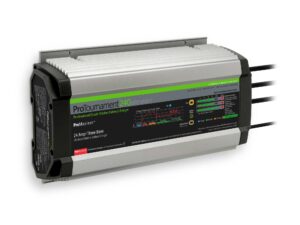
ProTournament Elite Gen 3 Chargers
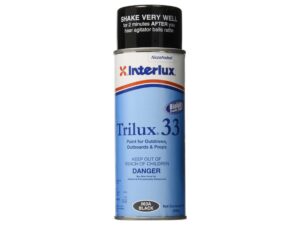
We Test Interlux Trilux 33 Aerosol Antifouling Paint

Boating Shoes for Spring and Summer
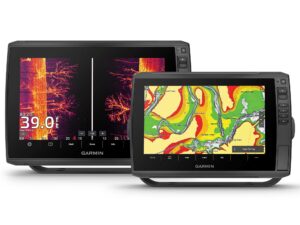
Garmin EchoMap Ultra 2 Series
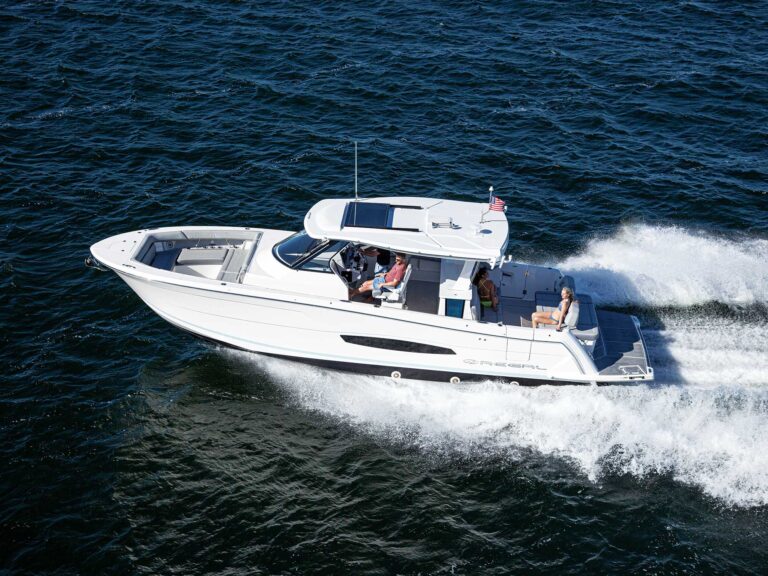
Boat Test: 2024 Regal 38 Surf
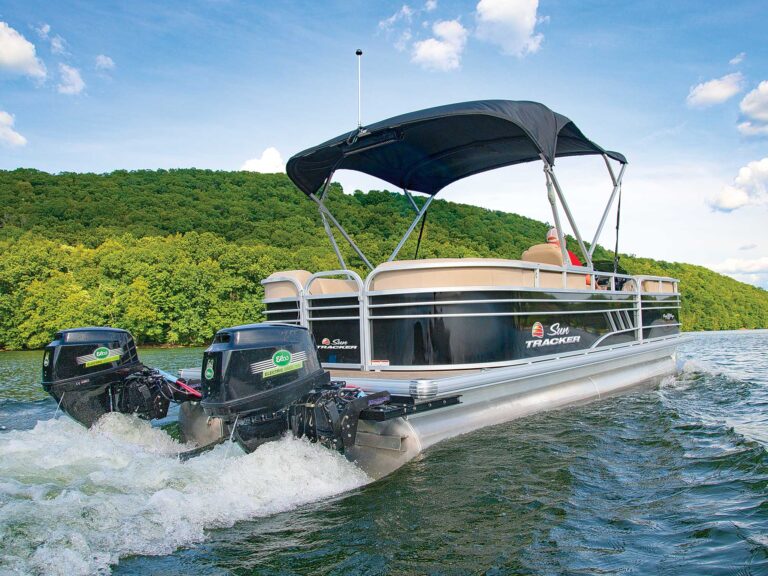
Using Hydrofoils to Improve Boat Performance
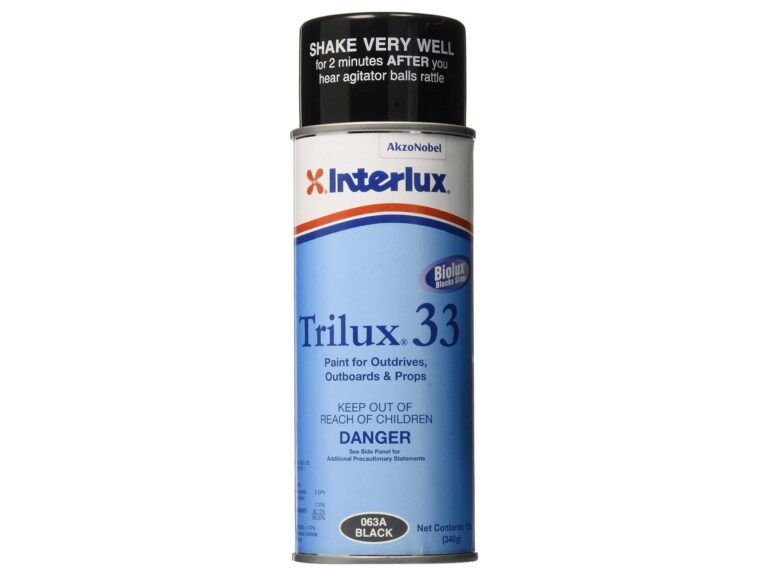
- Digital Edition
- Customer Service
- Privacy Policy
- Cruising World
- Sailing World
- Salt Water Sportsman
- Sport Fishing
- Wakeboarding
Many products featured on this site were editorially chosen. Boating may receive financial compensation for products purchased through this site.
Copyright © 2024 Boating Firecrown . All rights reserved. Reproduction in whole or in part without permission is prohibited.
VHF Radio Pre-Course Learning

What is the VHF Radio Pre-Course Learning Course About?
The free VHF Radio Pre-Course Learning is an interactive mini-course. It will give you the foundational knowledge you need. You will then get the most out of the classroom training.
The VHF Radio course is an intense day of learning. It is essential that you attend the course with some prior knowledge already in place.
Who should take this course?
This course is open to anybody who is going to take the VHF Radio course at an RYA training centre. If you are attending VHF Radio course in a classroom and wanting to gain a VHF licence, you should take this online course first.
What you will learn in the mini-course
The subjects covered in this course are:
?️ The phonetic alphabet
?️ Routine calls
?️ Pan Pan or urgent calls
?️ MAYDAY or emergency messages
?️ The different VHF radio channels and their uses
?️ VHF pro-words or radio speak
VHF Radio Pre-Course Quiz
This course will finish with a final quiz. You can use the quiz to confirm what you have learned.
Once complete you will be able to review your answers and check your score.
Course Content

- CLASSIFIEDS
- NEWSLETTERS
- SUBMIT NEWS

Icom Launches Groundbreaking IP-M60 Marine VHF/LTE Hybrid Radio at METS 2023
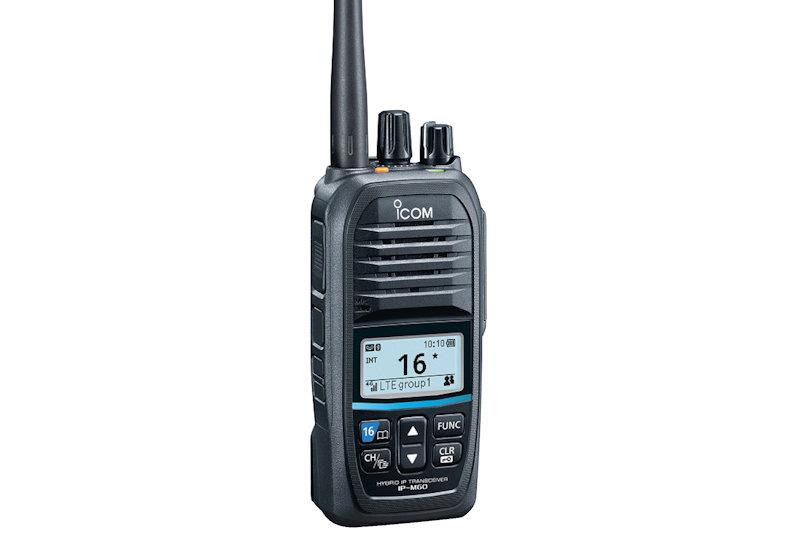
Related Articles
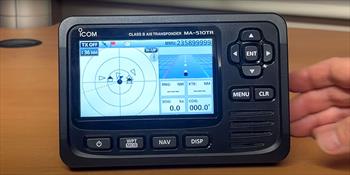

VHF Radio Course – Online
Duration: At your pace
Group Size: N/A
Min Age: From 12
Price: £65 (course pack included)
- This course is aimed at
- Read the article
- BOOK NOW & DATES
- Work Commercially
- Try our quiz
VHF Radio Course – Online - General

The Short Range Certificate (‘SRC’) is the radio operator qualification which authorises the holder to operate a VHF radiotelephone, fitted with Digital Selective Calling (‘DSC’) on board any British vessel which is voluntarily fitted with radio equipment.
For a number of years it has been possible to undertake the RYA VHF/Short Range Certificate Course either online or in a classroom. The end of course assessment is still taken in the classroom though.
The online course breaks down the teaching of all aspects of using a VHF Radio into manageable sections. As you work through each section there are various methods used to ensure that you have understood the subject such as little quizes and even the chance to use a simulator to make and record practice calls. Throughout there are recordings of radio calls so that you can hear what a real call would sound like.
At the end of the course there is a straightforward ‘knowledge check’ to ensure that you are ready to go ahead to the assessment.
Undertaking the course
Once we have set up your login and sent it to you you can logon and begin the course. You work through the course at your own pace. Once you have finished the various sections of the course you take an online practice test to check that you have the right level of knowledge for the assessment itself.
Completing the end of course test then leads the RYA Interactive system to issue you your own unique certificate. You will need to take this with you when attending the assessment.
How to book
Go to ‘Book Now’, choose the number of courses you wish to book, pay your course fee and we sign you up to the online course and send you your unique logon and course pack.
Minimum age
Any age for the course but 16 for the end of course assessment and the issue of the official licence.
Just need an assessment?
If you took the online course with another provider then we’re always happy to undertake the assessment for you. Please note though that the other Training Centre with need to send us the assessment card to arrive before you sit the assessment.
Booking the assessment
Assessments are scheduled to run at the end of every classroom course that we run (which is roughly every 2 weeks) so there will never be an issue scheduling you in. We may also be able to schedule in specific dates for groups of 3 or more – just call/email to check.
If you have undertaken the course online when you come to the examination we will arrange some time for you to get used to the VHF radios you will be using.
Prior Experience Required
None! Ahead of the course we will send you a course handbook and instructions on what preparation to undertake. This course pack can take the form of an ‘eBook’ or a ‘realBook’.
The cost of the course
The cost of the assessment
This is £60 and is payable in advance to the RYA through the RYA website. In your Joining Instructions for the course we send you, we’ll explain how to go about this. If you are undertaking the course for your work and we are invoicing your company then we can include the £60 fee in the invoice we create.
How do I access the course?
We set up your login and get the login details are emailed to you so that you can get going online. The course pack is sent next business day.
The dashboard gives you access to all aspects of the course including the additional videos to help you get to grips with the subjects.

Please tell me more about the end of course assessment
Assessments are scheduled at the end of every course that we conduct in the classroom – we run these every two weeks.
Don’t worry about the word ‘assessment’ – it is not scary! It’s just simply a way of ensuring that you can use the radio, understand what channels to use, make distress, urgency and safety calls etc.
There is a short written paper to complete so if you feel you may have any issues doing this in writing please do let us know ideally ahead of attending as we can conduct this verbally with you.
The practical assessment simply involves repeating the various calls you will have learnt to make during the online course.
The assessment element of the VHF Course will be conducted by a separate RYA Assessor. We have 7 assessors between Powerboat Training UK and Aquasafe Powerboat School so you may well know the assessor anyway. They are all hugely experienced at putting you at your ease and making the assessment straightforward and enjoyable.
Here is the RYA’s short video about the course
What’s best – the online or classroom course?
In all honesty if you can afford the time to come to us and do the course in the classroom in our opinion this is the best way. Whilst the online course is excellent what you really miss out on is the real hands on experience of our instructors who have many years of experience afloat and add to the syllabus to maximise the benefit of the course and your investment in it.
Additionally, many people may find it easier to progress and pass the exam, building on the time we spend using the radios during the day and the assistance the instructor provides as you progress through the course.
However if you want to do the course away from the classroom then the online course is great. Equally if you already have the VHF licence and either need the DSC element or just want to brush up then its an excellent option. Don’t forget though that you will need to come into our classroom to take the examination.
Why choose Powerboat Training UK for your online RYA VHF radio course?
We know that there are plenty of sites out there offering the RYA online VHF Radio course but like most sectors nowadays it is easy enough to create a whizzy looking website that reads well. Powerboat Training UK offers all of the online courses but has physical offices too with instructors and a support team always on hand to provide advice and guidance. With offices in two major south coast locations and VHF courses scheduled at least every two weeks booking the end of course examination is easy. So whilst you will probably find a website that offers courses a few pounds cheaper than schools with proper facilities you get in life pretty much what you pay for.
VHF Radio Course – Online - This course is aimed at
The RYA VHF/Short Range Certificate course is not just essential for all small boat skippers and their regular crew members, there are plenty of others it’s relevant to….
- Those with their own boats keen to ensure they are ‘legal’ but are also of course well versed in all of the means of issuing a distress message from their vessel. Whilst of course the distress element is a key factor knowing which channels to use and how to use the radio properly when out boating increases confidence and enjoyment.
- Those without a boat yet and keen to ensure they are acquiring the right qualifications either because they intend buying or for when they are chartering or hiring. The course is also a great way to enhance your knowledge about boating generally and helps when deciding what radios to buy.
- Those who have boated a while and are perhaps are already using their VHF but want to learn both how to use the radio to full effect and of course also to be legal.
- Kayakers and dinghy sailors are increasingly carrying personal hand held VHFs and are very sensible to do so. We have welcomed a good number of of kayakers and sailors to our courses – don’t let our company name put you off we love boating in all of its forms!
- Sailing clubs, Fire & Rescue Services, Police Forces, Military units and government bodies often ask us to come and train a group of their people in-house. As we have a portable kit including 8 radios plus examples of various EPIRBs, SARTs, PLBs etc so can ensure a really fun and informative course even if we are not running the course in our classroom.
VHF Radio Course – Online - Syllabus
Aim: “The Short Range Certificate (‘SRC’) is the radio operator qualification which authorises the holder to operate a VHF radiotelephone, fitted with Digital Selective Calling (‘DSC’) on board any British vessel which is voluntarily fitted with radio equipment.”
A. THE GENERAL PRINCIPLES AND BASIC FEATURES OF THE MARITIME MOBILE SERVICE RELEVANT TO VESSELS NOT SUBJECT TO A COMPULSORY FIT UNDER THE SOLAS CONVENTION.
A1. Types of communication in the maritime mobile service: – Distress, urgency and safety communication; – Public correspondence; – Port Operations – Ship Movement service; – Intership communication; – On-board communications;
A2. Types of station in the maritime mobile service: – Ship stations; – Coast stations; – Pilot stations, port stations etc – Aircraft stations; – Rescue coordination centre (RCC)
A3. Elementary knowledge of radio frequencies and channels appropriate to the VHF maritime mobile band. – The concept of frequency – Propagation on VHF frequencies – Range of voice communication – Range of DSC transmissions – Frequencies and channels allocated to the maritime mobile service: – The usage of VHF frequencies in the maritime mobile service; – The concept of radio channel: simplex, semi-duplex and duplex. – Channel plan for VHF including allocations for the GMDSS – Distress, urgency and safety channels; – National channels for small craft safety – Intership communications – Port operations and ship movement channels – Calling channels. – Public correspondence channels
A4. Functionality of ship station equipment – Sources of energy of ship stations – Batteries: Different kinds of batteries and their characteristics; Charging; Maintenance of batteries
B. DETAILED WORKING KNOWLEDGE OF RADIO EQUIPMENT.
B1. VHF Radio equipment.
1.1 Radiotelephone channels – Channel selection and controls – Dual watch facilities and controls
1.2 Basic controls and usage, e.g.: – Connecting the power: – Press to transmit switch – Squelch control – Using the volume control; – High/low power output switch: – Using the dimmer control – Dual watch function
1.3 Portable two-way VHF radiotelephone apparatus.
1.4 Maritime VHF antennas
B2. Purpose and use of Digital Selective Calling (DSC) facilities
2.1 The general principals and basic features of DSC – DSC messages – DSC attempt – Call acknowledgement – Call relay
2.2 Types of call – Distress call – All ships call – Call to an individual station – Geographical area call – Group call
2.3 The Maritime mobile Service Identity (MMSI) number system – Nationality identification: martime Identification Digits (MID) – Ship station numbers – Coast station numbers
2.4 Call categorisation and priority – Distress – Urgency – Safety – Ship’s business – Routine
2.5 Call telecommand and traffic information – Distress alerts – Other calls – Working channel information
2.6 VHF DSC facilities and usage – Channel 70 instant alert selector – DSC data entry and display – Updating vessel position – Entering pre-set message – Entering traffic information – Reviving received messages – DSC watch keeping functions and controls
C. OPERATIONAL PROCEDURES AND DETAILED PRACTICAL OPERATION OF GMDSS SUBSYSTEMS AND EQUIPMENT
C1. Search and Rescue (SAR) Procedures in the GMDSS
1.1 Sea areas and access to GMDSS facilities 1.2 The Role of RCCs 1.3 Organisation of search and rescue.
C2 Distress, urgency and safety communication procedures in the GMDSS
2.1 Distress communications via VHF DSC equipment – DSC distress alert – The definition of a distress alert – The transmission of a distress alert – Transmission of a shore to ship distress alert relay – Transmission of a distress alert by a station not itself in distress – Receipt and acknowledgement of VHF DSC distress alert – Acknowledgement procedure – Receipt and acknowledgement by a coast station – Handling of distress alert – Preparations for handling of distress traffic – Distress traffic terminology – On-scene communications – SAR operation
2.2 Urgency and safety communications via DSC equipment – The meaning of urgency and safety communications – Procedure for DSC Urgency and safety calls – Urgency communications – Safety communications
C3 Protection of distress frequencies.
3.1 Avoiding harmful interference: – Avoidance of the transmission of false alerts; – The status of VHF Channel 70.
3.2 Transmissions during distress traffic
3.3 Prevention of unauthorised transmissions.
3.4 Test protocols and procedures: – Testing DSC procedures – Radiotelephone test procedures;
3.5 Avoidance of transmissions in the VHF guard bands.
3.6 Procedures to follow when a false alert has been transmitted.
C4 Maritime safety information
4.1 The Navtex system: Purpose and capabilities, including distress and safety functions
C5 Alerting and locating Signals
5.1 Purpose and definition
5.2 Emergency Position Indicating Radio Beacons (EPIRBS) – Registration and coding – Information contents of a distress alert. – False alerts. – Operation, including automatic and manual activation – COSPAS/SARSAT 406MHz EPIRB – Inmarsat-E 1.6 GHz EPIRB – 121.5 EPIRB – VHF DSC EPIRB – 121.5 homing function – Mounting considerations – Routine maintenance – Testing – Checking battery expiry date – Checking the float-free mechanism expiry date
5.3 Search and Rescue Transponder (SART) – Operation – Operating height – Effect of radar reflector – Range of a SART transmitter – The SART transmission on a radar display – Routine maintenance of a SART – Testing a SART – Checking the battery expiry date
D. OPERATIONAL PROCEDURES AND REGULATIONS FOR VHF RADIOTELEPHONE COMMUNICATIONS
D1. Ability to exchange communications relevant to the safety of life at sea using the English language.
1.1 Distress communication. – Distress signal: – The correct use and meaning of the signal MAYDAY; – Distress call; – Distress message; – Acknowledgement of a distress message: – Obligation to acknowledge a distress message; – Correct form of acknowledgement; – Action to be taken following acknowledgement; – The control of distress traffic – The correct use and meanings of the signals – SEELONCE MAYDAY; – SEELONCE DISTRESS; – PRUDONCE; – SEELONCE FEENEE; – Transmission of a distress message by a station not itself in distress: – The meaning and correct use of the signal MAYDAY RELAY;
1.2 Urgency communications: – Urgency signal: – The meaning and correct use of the signal PAN-PAN; – Urgency message – Obtaining urgent medical advice through a Coast Radio Station
1.3 Safety communications: – Safety signal: – The meaning and correct use of the signal SECURITE; – Safety Message – Special procedures for communications with appropriate national organisations on matters affecting safety
1.4 Maritime Safety Information – Reception of MSI by VHF Radiotelephony
1.5 Awareness of the existence and use of the International Maritime Organization (IMO) Standard Marine Navigational Vocabulary – Knowledge of the following basic signals:- ALL AFTER, ALL BEFORE, CORRECT, CORRECTION, IN FIGURES, IN LETTERS, I SAY AGAIN, I SPELL OUT, OVER, RADIO CHECK, READ BACK, RECEIVED, SAY AGAIN, STATION CALLING, TEXT, TRAFFIC, THIS IS, WAIT, WORD AFTER, WORD BEFORE, WRONG.
1.6 Use of international phonetic alphabet for letters and phonetic pronunciation of numerals.
D2. Regulations, obligatory procedures and practices.
2.1 Awareness of international documentation and availability of national publications:
2.2 Knowledge of the international regulations and agreements governing the maritime mobile service: – Requirement for Ship Radio Licence; – Regulations concerning control of the operation of radio equipment by the holder of an appropriate certificate of competence; – National regulations concerning the keeping of radio records – Preservation of the secrecy of correspondence. – Types of call and types of message which are prohibited
D3. Practical and theoretical knowledge of radiotelephone procedures.
3.1 Public correspondence and radiotelephone call procedures – Method of calling a coast station by radiotelephony – Ordering for a manually switched link call – Ending the call – Calls to ships from Coast Radio Stations – Special facilities of calls – Selecting an automatic radiotelephone call
3.2 Traffic charges: – International charging system; – Accounting Authority Identification Code (AAIC).
3.3 Practical traffic routines – Correct use of callsigns – Procedure for establishing communication on – Intership channels – Public correspondence channels – Small craft safety channels – Port operation and ship movement channels – Procedure for unanswered calls – Procedure for garbled calls – Control of communications
VHF Radio Course – Online - Gallery
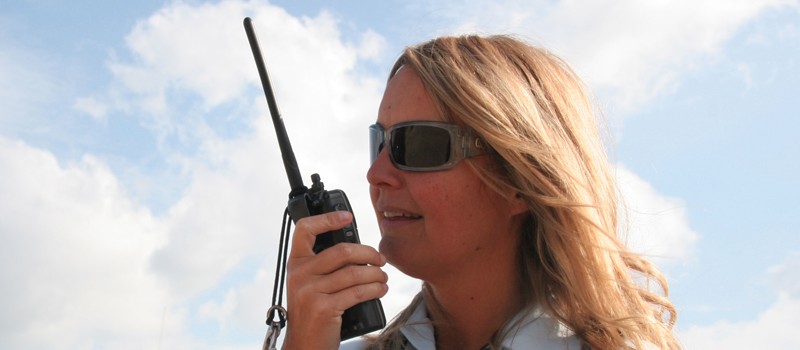
VHF Radio Course – Online - Book Now
Thank you for your interest in this course.
This is an online course so all you need to do is to select the version according to whether you are UK based or we need to send your pack overseas, you then pay and we will send your login details and instructions for taking the course and of course send you out your course pack. The logins will arrive the next business day as we need to manually set you up for this course.
We’re always really keen to chat to you when you’re booking a course as whilst we are happy to take bookings through this system for your convenience – nothing beats chatting about boats and courses!
Whilst this is an online course you will be prompted for a date, just leave the date it gives you as it doesn’t matter what date is selected. Select as many spaces as you need and then follow the booking process.
Purchase this course by selecting this button ( NOTE: To keep our booking system happy use today’s date for the course start and end date.)
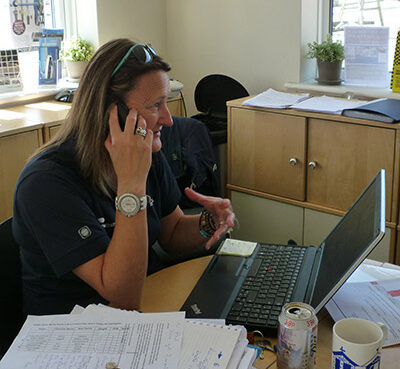
Get in touch
Where to find us...
Powerboat Training UK Ltd, The Slipway, Cobbs Quay Marina, Poole, Dorset, BH15 4EL
T: 01202 686666 E: [email protected]
Aquasafe Powerboat School, Lymington Yacht Haven, Kings Saltern Road, Lymington, Hampshire SO41 3QD
T: 01590 678809 E: [email protected]
Marine Education, Port of Poole Marina, Poole, Dorset BH15 1HJ
T: 01202 406066 E: [email protected]
Follow Us on...
Keep up to date with all the latest gossip and news
Register your interest in this course
At the moment it is not possible to book places on this particular course as we have marked it as full. However it may be that we are able to add additional people to this course or to add you to a reserve list in case someone already booked cannot attend. If this date is of particular interest to you please complete the form below and we will contact you to see what we can do to accommodate you.
Request a last minute space
At the moment it is not possible to book places on this particular course as we have marked it as closed due to it being very close to the course running. However it may be that we are able to add you to this course or to add you to a reserve list in case someone already booked cannot attend. If this is is of interest to you please complete the form below and we will contact you to see what we can do to accommodate you.

Icom-M330GE
Icom-M330GE The IC-M330GE is the smallest fixed VHF radio on the market. Measuring only 156.5(W) × 66.5(H) × 110.1(D) mm, its face is the same size as a smartphone, making it ideal for a cockpit on RIBs and small sports
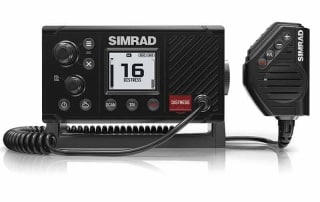
Simrad RS20
Simrad RS20 The latest radio from Simrad, the RS20, is a rugged Class D digital selective calling (DSC) marine VHF radio. Though not as well known as the likes of Icom when it comes to making radios for open boats,
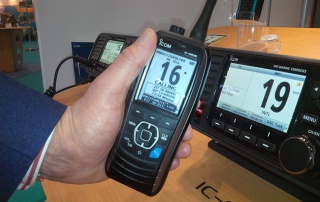
Icom Launch IC-M93D Handheld
Icom unveiled the first sample of their new handheld VHF/DSC at the London Boat Show. Flown in especially from Osaka, Japan, the new product, called the IC-M93D, is only 145mm tall and weighs just 310g. Despite its size, the IC-M93D

Subscribe to the PBR Newsletter
Get all the latest news, reviews and exclusives, direct to your inbox
By clicking subscribe, you agree to receive news, promotions and offers by email from PBR. Your information will be used in accordance with our privacy policy .

INSCMagazine
Models, Lifestyle, Sports, Entertainment and Culture

- Powerboat Level 2 and VHF Radio Course- All you need to know!
- #INSCMagazine

Are you looking to upgrade your knowledge and skillset as a powerboat user? The Powerboat Level 2 and VHF Radio Course offers the ultimate package for safety at sea, providing certified tuition in both practical boat handling and radio communications.
Go beyond merely believing you know what to do in an emergency situation, and learn the casualty care first aid principles you need to act swiftly and effectively. Master practical techniques for man overboard procedures, collision avoidance, launching & recovery skills as well as crew interaction in various locations & conditions.
Implement the correct radio communications from planning before your journey to ensuring a safe return after it. Aspiring seafarers can delve into chart work plotting courses, buoy & channel markers and become aware of the nuances of tide movement.
If you’re keen to equip yourself with all the necessary knowledge and skillset for safe powerboat proficiency – enrol in the Powerboat Level 2 and VHF Radio Course today!
What is a Powerboat Level 2 Course?
Do you have a passion for getting out on the open water and want to learn how to safely navigate coastal waters? If so, then look no further than the Powerboat Level 2 Course. This intensive training program provides essential safety and operational knowledge and skills needed in order for participants to become proficient powerboat operators.
Those who sign up for this course can expect to take part in a minimum number of classroom hours learning about theoretical aspects of vessel operation while they are still visible from ashore sites only, as well as practical experiences with their own boat during an appropriate period within 12 months after completion date of the theory session.
During these practical sessions, participants will demonstrate six (or more) specific skills that they’ve learned from their course such as anchoring high speed manoeuvres, mooring astern/alongside , navigating with visual reference points like buoys etc.They will also carry out practices travelling upriver or negotiating estuary navigation under different winds or tides.
If you’re looking to embark on your journey into becoming a confident powerboat operator, then the Powerboat Level 2 Course could be just what you’re looking for. This course can equip you with all of the necessary safety and operational knowledge to ensure your sailing trips are enjoyable and stress free!
Is there any eligibility criteria?
To meet the eligibility requirements for a Powerboat Level 2 Course, several criteria must be met.
These include being at least 16 years old, physically and mentally fit to operate a powerboat, having a good working knowledge of nautical terms and rules, as well as evidence of experience.
This could be in form of another boating qualification, or evidence demonstrating that an individual has sufficient amount of time carrying out practical on-the-water exercises for at least 20 hours.
Apart from the eligibility criteria, individuals will also need to provide valid ID documentation showing proof of identity and residence.
Overall, meeting these criteria is essential for those looking to obtain a Powerboat Level 2 Course qualification as it helps ensure that all learners have achieved necessary skills prior to assessment which in turn ensures they can safely operate powerboats at an adequate level on inshore waters by the end of this program.
What is a VHF Radio Course?
Navigating the open seas or any other body of water can be a daunting task. It requires skill, experience, and an efficient system of communication to ensure safe journeys for all vessels involved.
That’s why getting certified in VHF Radio Courses is so important—it will provide you with the knowledge and skills you need to use modern maritime radio channels effectively while operating close to shore, on large vessels, or when using smaller craft.
A VHF Radio Course is an educational course designed to provide mariners with the basics of radio communication and procedures. It teaches students about maritime distress and urgency signals, emergency protocols, communication protocols, laws governing inland navigation, proper use of VHF reception/transmission equipment (Very High Frequency), general radio operations in coastal waters as well as digital selective calling systems/devices.
These are all essential aspects when it comes to safe sailing. Furthermore, certification demonstrates that you have a comprehensive understanding of radio operation which could be crucial during an emergency or other situations where clear communication is paramount.
In conclusion, a VHF Radio Course offers mariners the opportunity to communicate easily and safely over long distances while navigating waters around the world.
It provides an essential foundation of understanding laws, safety protocols and radio operations when sailing. Being certified in this course demonstrates your proficiency in maritime radio channels which could be vital during emergency situations or at sea.
VHF Radio courses are increasingly becoming popular amongst seafarers, harbour masters and yachtsmen. In order to ensure that individuals have the necessary knowledge and skills to operate a VHF (Very High Frequency) radio, these unequalled training courses prepare attendees for successful operations of all kinds of Maritime Station Licenses.
However, is there any eligibility criteria one needs to meet in order to undertake a VHF Radio course? The answer is yes. Firstly, the applicant must have completed primary education and their knowledge of spoken English should be proficient enough for them to understand and communicate with others by radio during emergency situations.
Furthermore, if one were taking a competence-based Mobile Maritime Visual Distress Signalling Device Course (MMVDS) they must also possess either an Operator’s Certificate or Marine Radio Short Range Certificate (MRSC).
In addition, several countries including Malta may require participants to be at least 18 years old before they can embark upon any form of VHF Training Course. To ensure the highest safety standards, physical and mental competency will also be assessed.
This usually includes practical tests such as ropes and lines handling, navigation or first aid training — all of which help to evaluate an individual’s aptitude for VHF operations.
As such, it is imperative that one meets all the prerequisites before attempting a VHF Radio Course. Once done so, individuals can then dive into studying the fundamentals of radio communication – further equipping them with critical skills needed by mariners in our ever-changing environment today!
The Bottom Line
The Powerboat Level 2 and VHF Radio Course offers learners an excellent way to safely explore the open waters by acquiring the necessary knowledge and skills for proper boat operation.
Taking this course will grant you access to areas of sailing normally out of reach, as well as allow you to enjoy a stress free experience while driving your powerboat. It also provides useful tips on the maintenance and repairs of powerboats, environmental awareness, and introduce mariners to many safety measures.
With additional practice gained by earning a Level 2 qualification with VHF radio certification, you’ll be prepared for any situation encountered during a voyage on open waters.
All these added educational benefits make the Powerboat Level 2 & VHF Radio Course an excellent way to equip boaters of all experiences with knowledge on how to operate their boat safely and enjoyable.
Share this:
Leave a reply cancel reply.
This site uses Akismet to reduce spam. Learn how your comment data is processed .
(01) 280 4422

VHF Radio Certificate – Training Course
Our VHF courses are audited to the highest international standard and are approved by the Department of Transport Marine Radio Affairs Unit. We run both the Certificate of Competency in Radiotelephony (Module 1) and the Radio Operator’s Short Range Certificate of Competency (Module 2). VHF courses are run from September through to March. To receive updates on our upcoming courses, please be sure to sign up to our newsletter.
Please remember that you need to book as our courses are restricted to six places only. A €50 deposit is required to secure a place. Remember to e-mail [email protected] . Courses for groups of six can be provided at any time during the year.
Evening Courses 5 Consecutive evenings 7.15pm to 10pm Nightly (Fri 6.30pm start)
Weekend and Weekday Courses, 10 am to 5 pm Sat and 10 am to 7 pm Sun.
Private courses of 6 persons available.
Our VHF courses are in accordance with the standard set down by the Department of Transport Marine Radio Affairs Unit and other international bodies. Don’t let yourself be caught out with other courses that don’t carry the Irish government standard as licences (which give you your MMSI number and call sign) will not be issued by the Irish authority.
Course duration: 5 Evenings or 2 days Course cost: Training / Exams / COM Reg / Examiner / all included € 295. plus VAT.
Essex Marine Training, RYA Training Provider in Essex, England. RYA Eastern Area. For Powerboating, Navigation, Day Skipper, Yachtmaster, VHF, SRC Radio, Diesel Engine, First Aid, Sea Survival, Radar, Theory and Practical Courses, Classroom, afloat, Powerboats, Ribs, Speedboats, Yachts, Essex, Training, England, Marine, Training, RYA,

Number One for Training
Whether it's the first step into boating as a hobby, or a marine course towards a professional qualification, we have you covered..
We use our commercial maritime background to add value to our courses.
Commercial Clients and group bookings welcome.
Come And Train With Us
Popular courses, navigation theory courses.
We offer all levels of theory navigation. These are taught in a comfortable classroom environment in Essex.
For group bookings we can also come to you. All course materials provided
Essential Nav - Day Skipper - Yachtmaster
RYA Powerboat Courses
We offer Powerboat Courses in our ribs based in Brightlingsea.
Popular courses include the RYA Powerboat Level 2 which is a two-day course.
We also offer one-to-one tuition and specialist tailored training.
SRC/VHF Radio Course
Come and take this very important one-day course with us.
A radio is an important piece of safety equipment on board and it is vital to understand the correct procedures.
To book, email us!

Why Choose Us?
Experience- We want you to have a great time and great fun learning with us. It needs to be professional, appropriate, worthwhile and fun for you and we work hard to provide this.
Instructors- We only use a small group of skilled instructors that know their stuff, and want you to enjoy your course.
Kit- We aim to provide really good quality, modern training kit- including our training boats!
Location- We have a great training area. Surrounded by beautiful views, in a sheltered harbour on the renowned East Coast. The best of both worlds- shelter in one direction, and open water the other. It has all the facilities for a great course.
We are a friendly company that runs courses for individuals as well as organisations. Whether just starting out or ready to further your knowlege, we have a course for you.
Set up in 2015 by two commercially endorsed instructors, we have a wide range of practical experience to compliment teaching RYA training courses.
Remember, we have completed the same courses you can take, so we know exactly what you need to know and how it will help you in your leisure or commercial boating.

Posted 2024-03-15 09:16
Contact Information:
Standard Horizon GX2320S TITAN + VHF/FM Marine Boat Radio 25W - $60 (Apache Junction, AZ)

google map
QR Code Link to This Post
post id: 7727424249
posted: 2024-03-15 09:16
updated: 2024-03-20 08:08
♥ best of [ ? ]
refresh the page.
Standard Horizon GX2320S TITAN + VHF/FM Marine Boat Radio 25W -...
Standard Horizon GX2320S TITAN + VHF/FM Marine Boat Radio - This radio is a few years old but it has been sitting in a drawer for almost all of that time. It looks and works like new. The microphone...

Strange Glow Over Moscow Skies Triggers Panic as Explosions Reported
B right flashes lit up the night sky in southern Moscow in the early hours of Thursday morning, new footage appears to show, following reports of an explosion at an electrical substation on the outskirts of the city.
Video snippets circulating on Russian-language Telegram channels show a series of flashes on the horizon of a cloudy night sky, momentarily turning the sky a number of different colors. In a clip shared by Russian outlet MSK1.ru, smoke can be seen rising from a building during the flashes lighting up the scene.
Newsweek was unable to independently verify the details of the video clips, including when and where it was filmed. The Russian Ministry of Emergency situations has been contacted via email.
Several Russian Telegram accounts said early on Thursday that residents of southern Moscow reported an explosion and a fire breaking out at an electrical substation in the Leninsky district, southeast of central Moscow.
Local authorities in the Leninsky district told Russian outlet RBC that the explosion had happened in the village of Molokovo. "All vital facilities are operating as normal," Leninsky district officials told the outlet.
The incident at the substation in Molokovo took place just before 2 a.m. local time, MSK1.ru reported.
Messages published by the ASTRA Telegram account, run by independent Russian journalists, appear to show residents close to the substation panicking as they question the bright flashes in the sky. One local resident describes seeing the bright light before losing access to electricity, with another calling the incident a "nightmare."
More than 10 villages and towns in the southeast of Moscow lost access to electricity, the ASTRA Telegram account also reported. The town of Lytkarino to the southeast of Moscow, lost electricity, wrote the eastern European-based independent outlet, Meduza.
Outages were reported in the southern Domodedovo area of the city, according to another Russian outlet, as well as power failures in western Moscow. Electricity was then restored to the areas, the Strana.ua outlet reported.
The cause of the reported explosion is not known. A Telegram account aggregating news for the Lytkarino area described the incident as "an ordinary accident at a substation."
The MSK1.ru outlet quoted a local resident who speculated that a drone may have been responsible for the explosion, but no other Russian source reported this as a possible cause.
Ukraine has repeatedly targeted Moscow with long-range aerial drones in recent months, including a dramatic wave of strikes in late May.
On Sunday, Moscow Mayor Sergei Sobyanin said the region's air defense systems had intercepted an aerial drone over the city of Elektrostal, to the east of Moscow. No damage or casualties were reported, he said.
The previous day, Russian air defenses detected and shot down another drone flying over the Bogorodsky district, northeast of central Moscow, Sobyanin said.
There is currently no evidence that an aerial drone was responsible for the reported overnight explosion at the electrical substation in southern Moscow.
Related Articles
- Russian Soldier Bashes Drone With Shovel After Detonation Failure: Video
- Russia Headed for Disappointment in Battles Along Dnieper River: UK
- Ukraine's Military Receives Good News From Multiple NATO Allies
Start your unlimited Newsweek trial

30 Best universities for Mechanical Engineering in Moscow, Russia
Updated: February 29, 2024
- Art & Design
- Computer Science
- Engineering
- Environmental Science
- Liberal Arts & Social Sciences
- Mathematics
Below is a list of best universities in Moscow ranked based on their research performance in Mechanical Engineering. A graph of 269K citations received by 45.8K academic papers made by 30 universities in Moscow was used to calculate publications' ratings, which then were adjusted for release dates and added to final scores.
We don't distinguish between undergraduate and graduate programs nor do we adjust for current majors offered. You can find information about granted degrees on a university page but always double-check with the university website.
1. Moscow State University
For Mechanical Engineering

2. Bauman Moscow State Technical University

3. National Research University Higher School of Economics

4. Moscow Aviation Institute

5. N.R.U. Moscow Power Engineering Institute

6. National Research Nuclear University MEPI

7. National University of Science and Technology "MISIS"

8. Moscow Institute of Physics and Technology

9. Moscow State Technological University "Stankin"

10. RUDN University

11. Moscow Polytech

12. Moscow State University of Railway Engineering
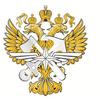
13. Finance Academy under the Government of the Russian Federation

14. Moscow Medical Academy

15. Russian State University of Oil and Gas
16. mendeleev university of chemical technology of russia.

17. Russian National Research Medical University

18. Plekhanov Russian University of Economics

19. National Research University of Electronic Technology

20. Moscow State Pedagogical University

21. Russian Presidential Academy of National Economy and Public Administration

22. State University of Management

23. Moscow State Institute of International Relations

24. Russian State Geological Prospecting University
25. russian state agricultural university.

26. New Economic School

27. Moscow State Technical University of Civil Aviation

28. Russian State University for the Humanities

29. Russian State Social University

30. Moscow State Linguistic University

Universities for Mechanical Engineering near Moscow
Engineering subfields in moscow.

- New comments
- Military Photos
- Russian Military
- Anti-Aircraft
- SA-21/S-400 Triumf
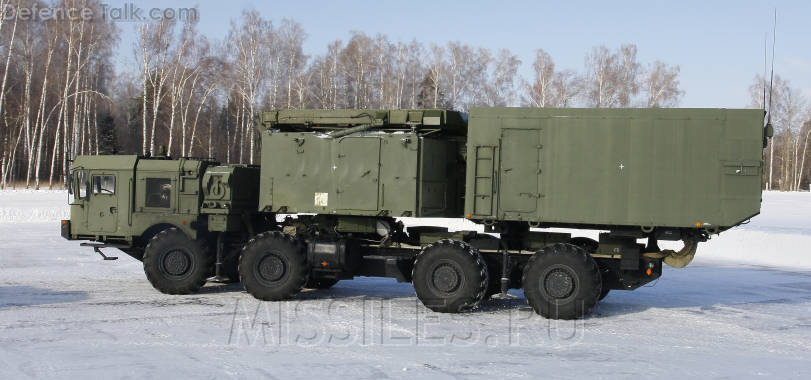
92N6E Radar, S-400
- Oct 18, 2010
Media information
Share this media.
- This site uses cookies to help personalise content, tailor your experience and to keep you logged in if you register. By continuing to use this site, you are consenting to our use of cookies. Accept Learn more…

IMAGES
COMMENTS
The Top 5 VHF Marine Radios in 2024. 1. Best Budget: Uniden Atlantis 155. 2. Floating, Tri-Watch: Cobra MR HH350 VHF Radio. 3. Sleek & Complete: ICOM 94D with AIS. 4.
Pair a fixed mount VHF unit with the tallest antenna possible. Frequent Antenna Questions. Q. Powerboat VHF antennas with 9 dB gain are reported "too high in gain" for boats in heavy seas.Is this correct? A. A 9 dB gain antenna is suitable for a stable platform while 3 dB is best for smaller boats.
A VHF radio is a critical piece of safety equipment that should be on board every powerboat, and knowing how to use it could save the life of you and your passengers, so read the owner's manual for your radio to become familiar with its functions.That same VHF marine radio can be used to communicate with other boats, with draw bridges and locks, and with marina operators.
Feature Description; 📻 Type of VHF Radio: Marine VHF radios are of two types: Fixed-mount (mounted on boats with higher transmission power) and Handheld (portable, ideal as a backup or for small vessels). 🛰️ GPS Compatibility: A VHF radio with built-in GPS offers enhanced safety and functionality. Ensure the radio is compatible with your boat's GPS.
Other considerations for choosing the right VHF antenna include antenna height and gain. Catoe says the vast majority of powerboats in the 24- to 32-foot range do well using 8-foot antennas with 6-decibel (dB) gain. A 3- to 4-foot antenna that's 3 dB is generally recommended for boats under 24 feet. Larger vessels can opt for 12- to 18-foot ...
A VHF radio is a critical piece of safety equipment that should be on board every powerboat, and knowing how to use it could save the life of you and your passengers, so read the owner's manual for your radio to become familiar with its functions. That same VHF marine radio can be used to communicate with other boats, with draw bridges and ...
VHF Radio Size and shape. Typical fixed compact units measure about 6″ wide x 3″ tall x 5-6″ deep and are designed to fit in the or around the helm. Standard Horizon makes two of the smallest. The cases on the GX1700 and GX1600 are only about 3 1/2″ deep, so they're a good choice for a small boat.
About Nautical Circle. Located at Waterside Marina in Kingston upon Hull, Nautical Circle is a truly national training centre delivering high quality, low student ratio training courses. We have students travelling from all over the world to train with our approved RYA, HSE & MCA instructors.
We tested two high-end VHF antennas ideally suited to a powerboat from 20 to 40 feet long. We also took a look at one value antenna and two short antennas suited to small boats or sailing vessels. ... Recreational VHF radios are limited to 25 watts of output, but land stations can be permitted for higher transmission power. Termination RG8/X ...
The free VHF Radio Pre-Course Learning is an interactive mini-course. It will give you the foundational knowledge you need. You will then get the most out of the classroom training. The VHF Radio course is an intense day of learning. It is essential that you attend the course with some prior knowledge already in place.
These innovative marine radios offer enhanced functionality and flexibility for communication on board various vessels. Posted on 1 Aug 2023 Icom launches IC-U20SR Ultra-Compact, User-Friendly, Licence-Free Two-Way Radio Icom is pleased to announce the launch of the IC-U20SR ultra compact PMR446 licence-free two-way radio.
Ray63 multi-station VHF radio . The Ray63 is a full-function VHF marine radio built on a full-sized radio chassis, and features oversized controls and a larger LCD for easy operation offshore. The Ray63 also supports multi-station expansion and intercom capability via a single-wired RayMic controller, or two wireless RayMic controllers.
VHF Radio Course - Online - General The Short Range Certificate ('SRC') is the radio operator qualification which authorises the holder to operate a VHF radiotelephone, fitted with Digital Selective Calling ('DSC') on board any British vessel which is voluntarily fitted with radio equipment.
Now taking bookings for RYA Yachtmaster Coastal & Offshore Preparation courses. The VHF Radio Short Range Certificate is the minimum qualification required by law to control the operation of VHF and VHF Digital Selective Calling (DSC) equipment on any British flagged vessel voluntarily fitted with a radio. This includes both fixed and hand held ...
Icom-M330GE The IC-M330GE is the smallest fixed VHF radio on the market. Measuring only 156.5(W) × 66.5(H) × 110.1(D) mm, its face is the same size as a smartphone, making it ideal for a cockpit on RIBs and small sports ... POWERBOAT & RIB MAGAZINE - The Adventure Boating Magazine . Boat tests, gear tests & reviews; cruising adventures ...
The Powerboat Level 2 and VHF Radio Course offers learners an excellent way to safely explore the open waters by acquiring the necessary knowledge and skills for proper boat operation.
A €50 deposit is required to secure a place. Remember to e-mail [email protected]. Courses for groups of six can be provided at any time during the year. Evening Courses 5 Consecutive evenings. 7.15pm to 10pm Nightly (Fri 6.30pm start) Weekend and Weekday Courses, 10 am to 5 pm Sat and 10 am to 7 pm Sun.
Set up in 2015 by two commercially endorsed instructors, we have a wide range of practical experience to compliment teaching RYA training courses. Remember, we have completed the same courses you can take, so we know exactly what you need to know and how it will help you in your leisure or commercial boating. Essex Marine Training, Essex, England.
Standard Horizon GX2320S TITAN + VHF/FM Marine Boat Radio - This radio is a few years old but it has been sitting in a drawer for almost all of that time. It looks and works like new. The microphone is really white but shows up as yellow in the photo. New comparable 25W radios to this one cost at least $169.00 plus tax.
Courses available for both beginners and experienced skippers. iPowerboat run all courses from RYA Powerboat Level 2, to Advanced Powerboat & Yachtmaster Offshore. Day Skipper to Yachtmaster™ Offshore theory, Sea Survival to VHF radio, SQA Radar and Electronic Chart Systems as well as STCW First Aid are just some of the training courses we offer.
B right flashes lit up the night sky in southern Moscow in the early hours of Thursday morning, new footage appears to show, following reports of an explosion at an electrical substation on the ...
Moscow 30. Saint Petersburg 16. Tomsk 6. Below is the list of 30 best universities for Mechanical Engineering in Moscow, Russia ranked based on their research performance: a graph of 269K citations received by 45.8K academic papers made by these universities was used to calculate ratings and create the top.
First S-400 bltn, Elektrostal, Moscow. This site uses cookies to help personalise content, tailor your experience and to keep you logged in if you register.
Find company research, competitor information, contact details & financial data for BETA GIDA, OOO of Elektrostal, Moscow region. Get the latest business insights from Dun & Bradstreet.